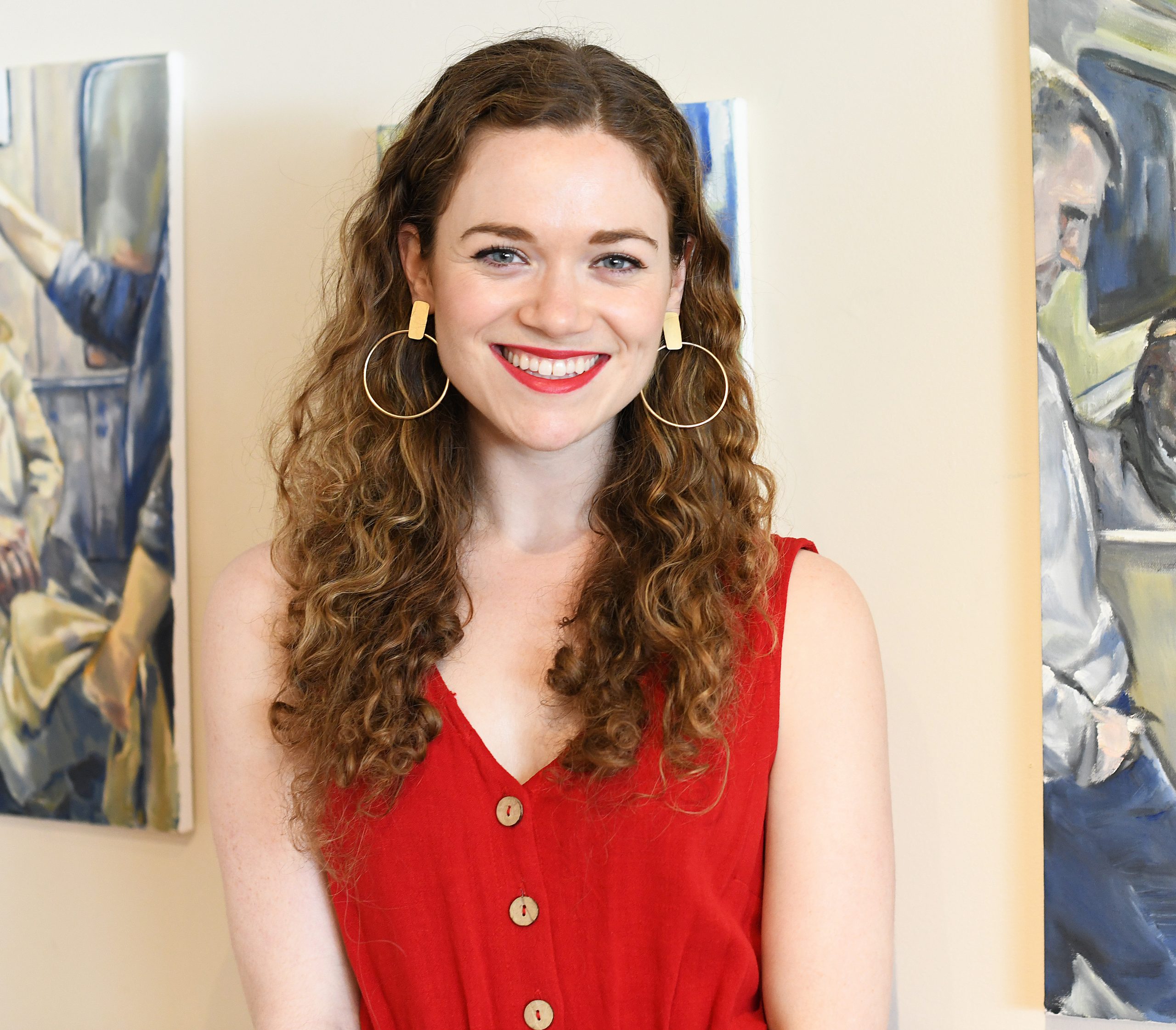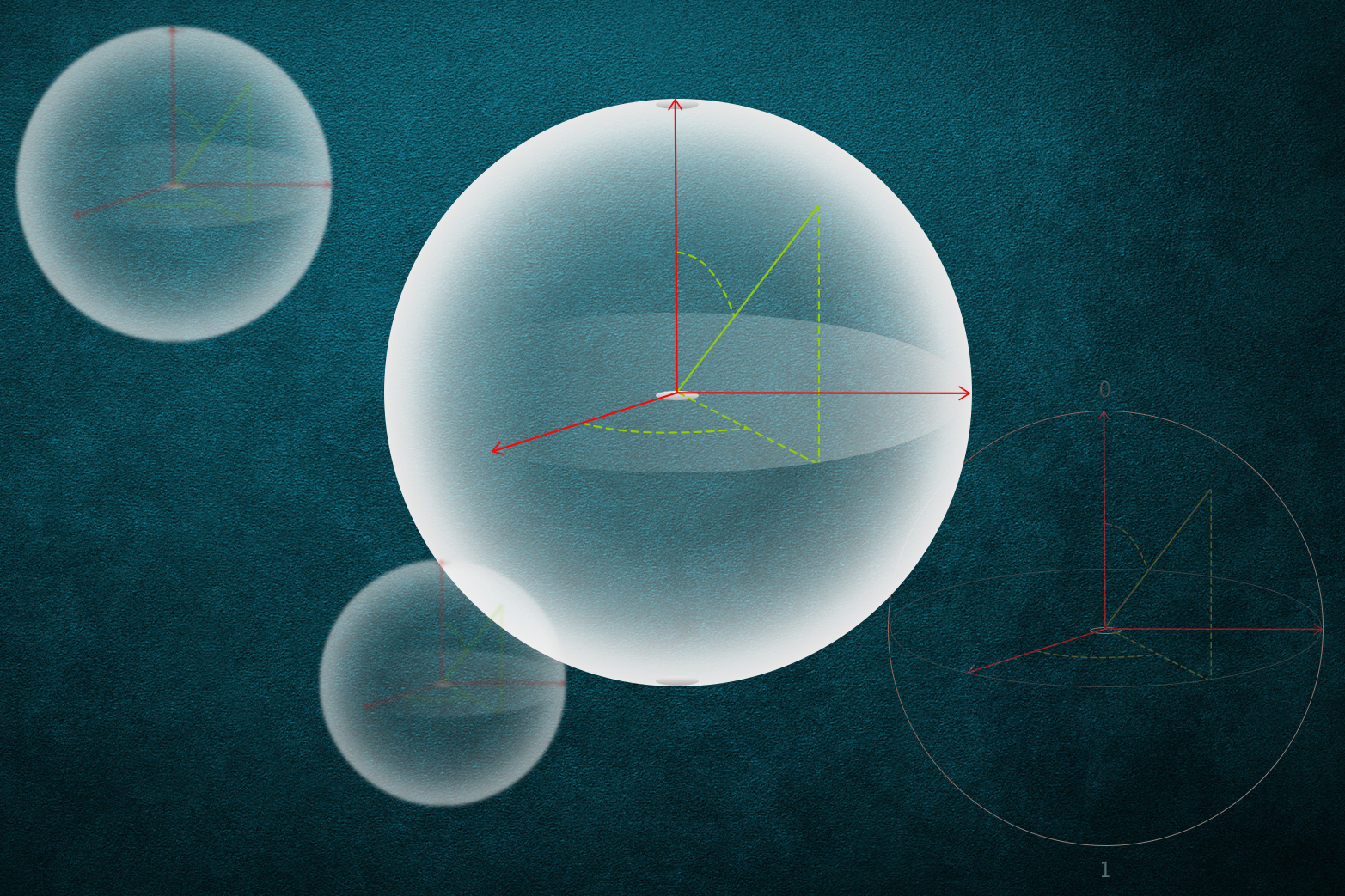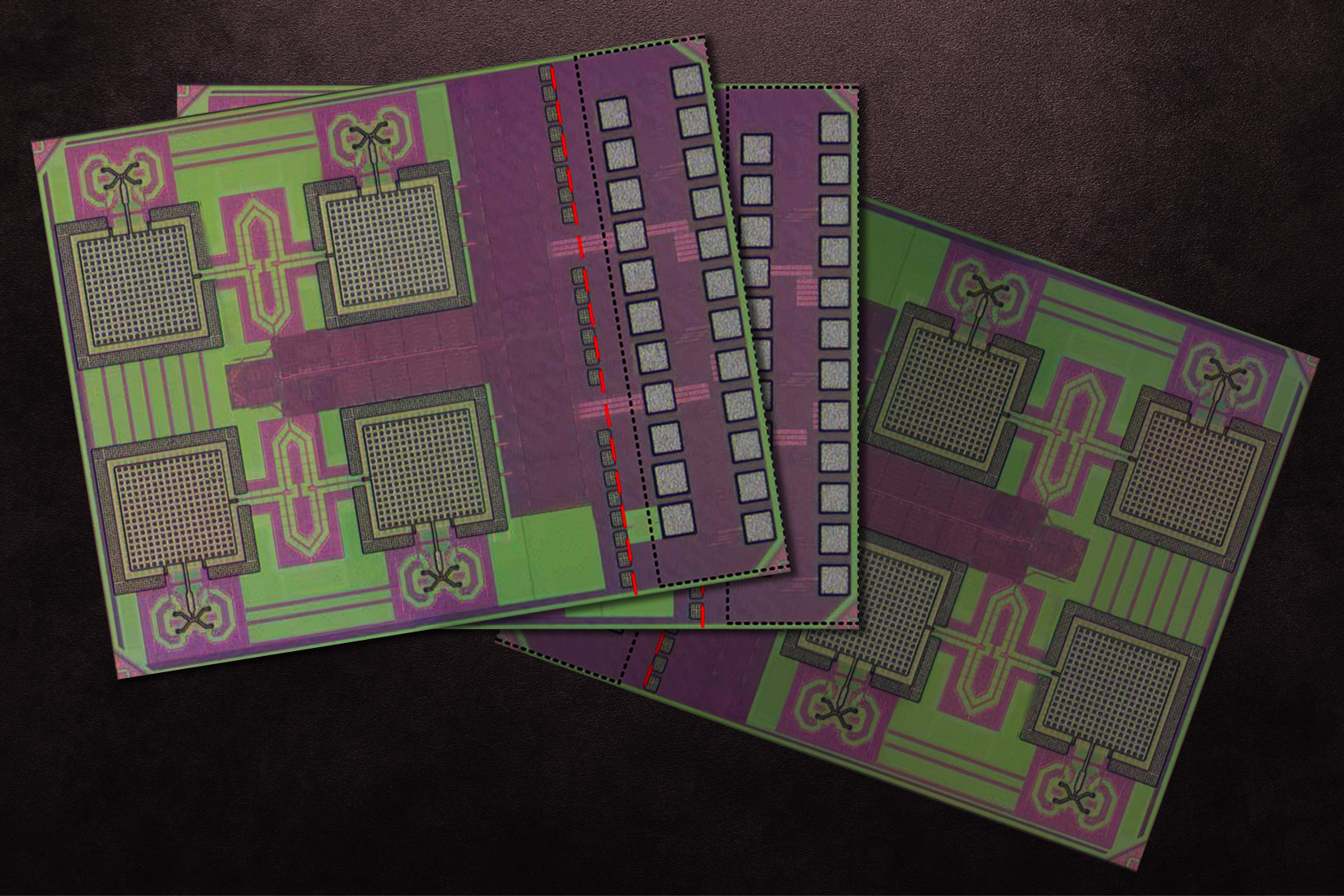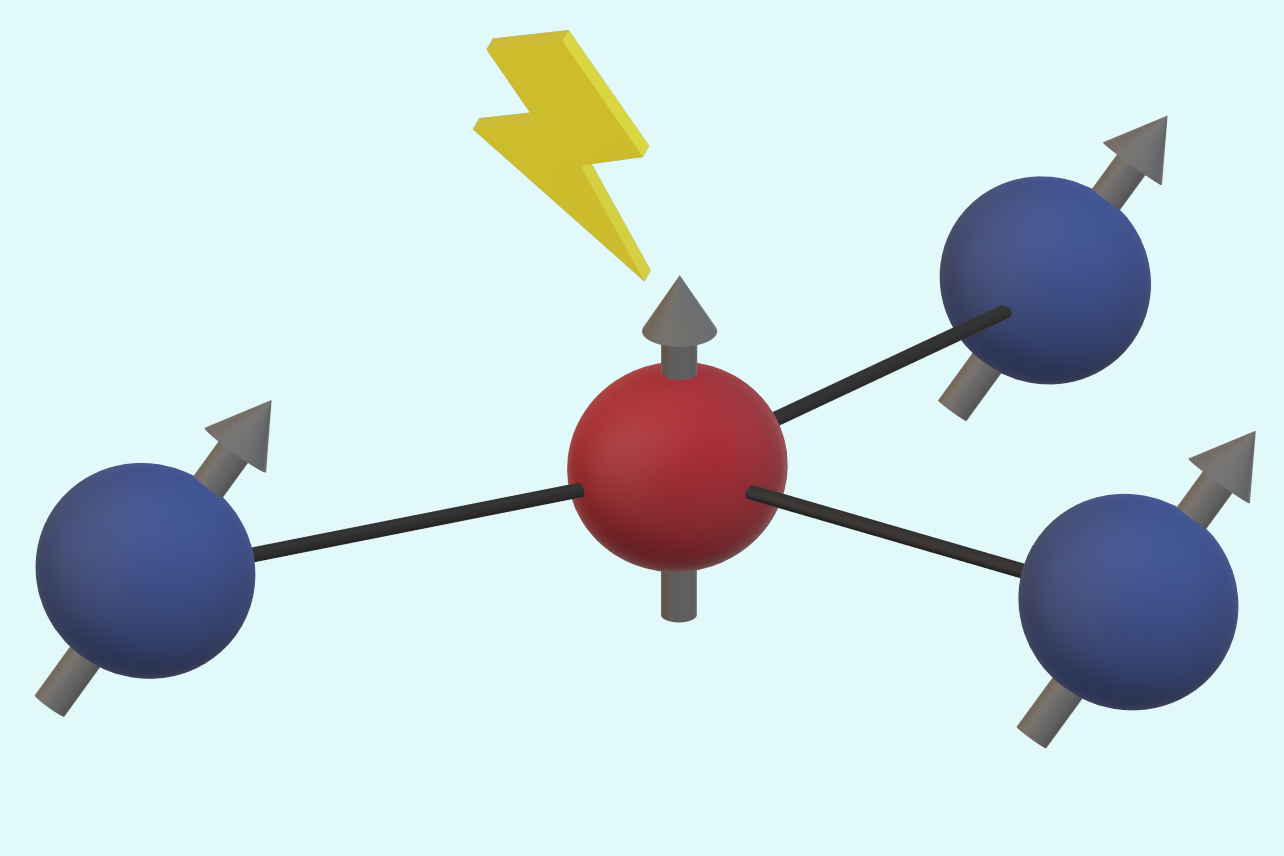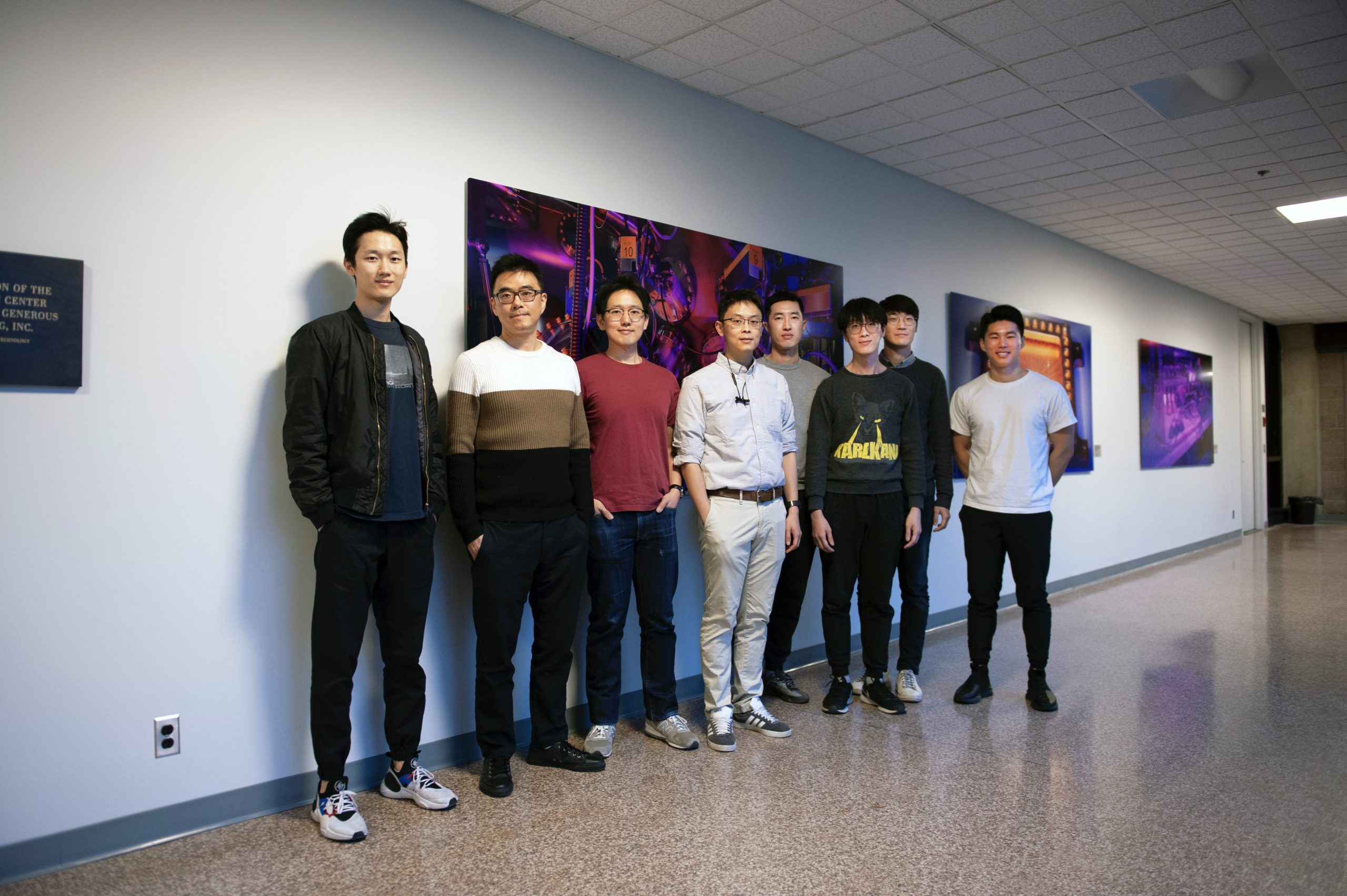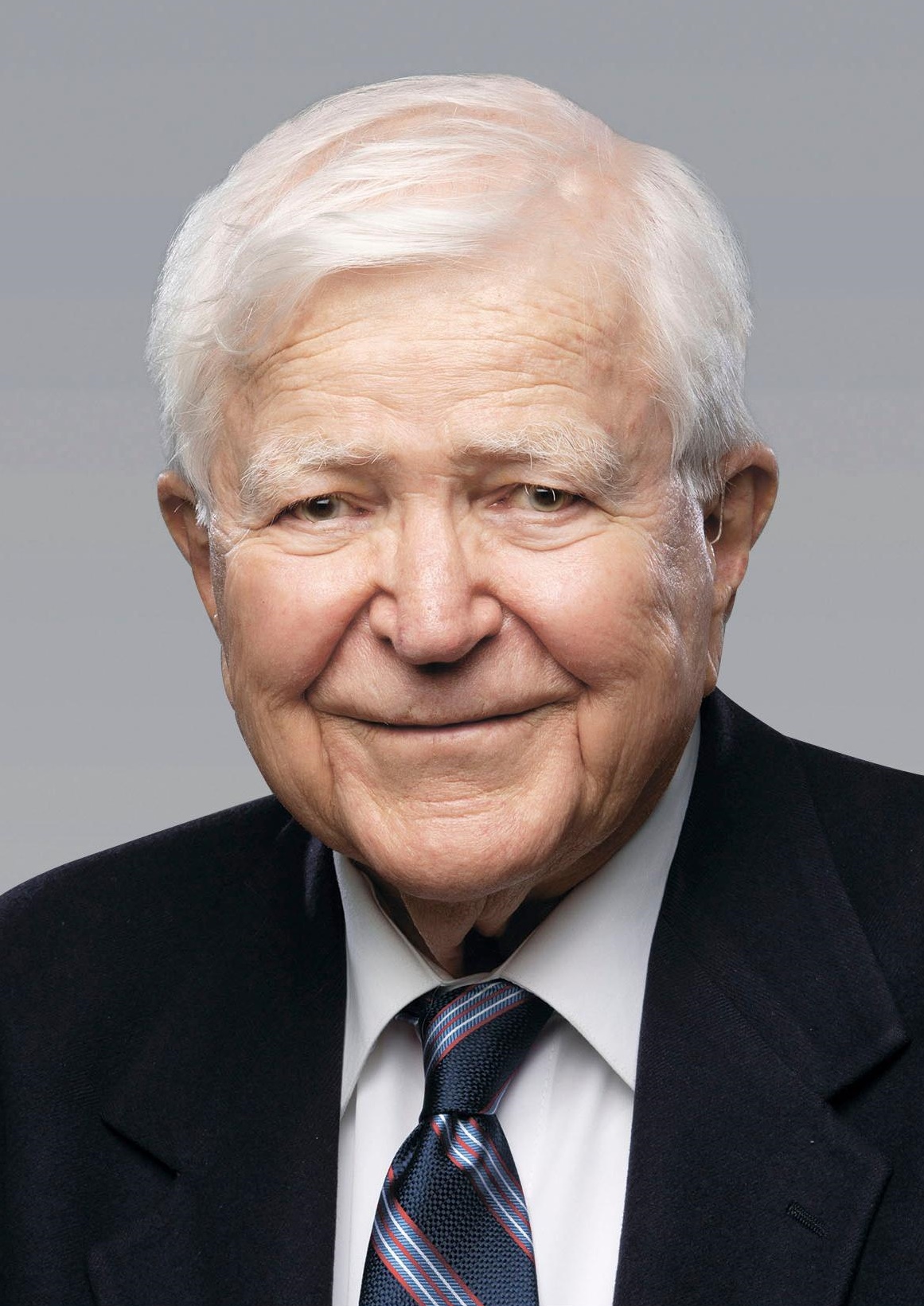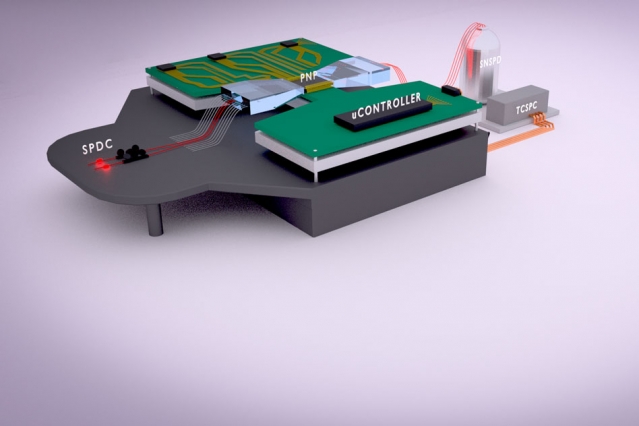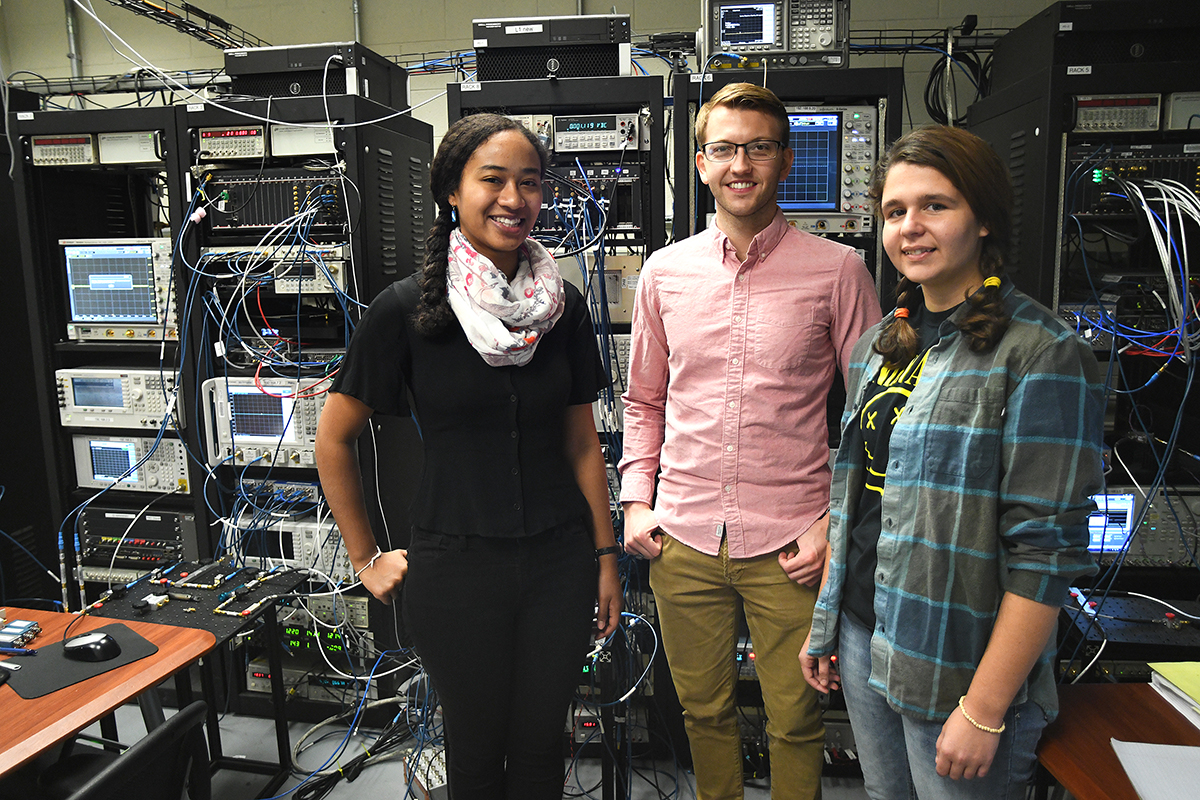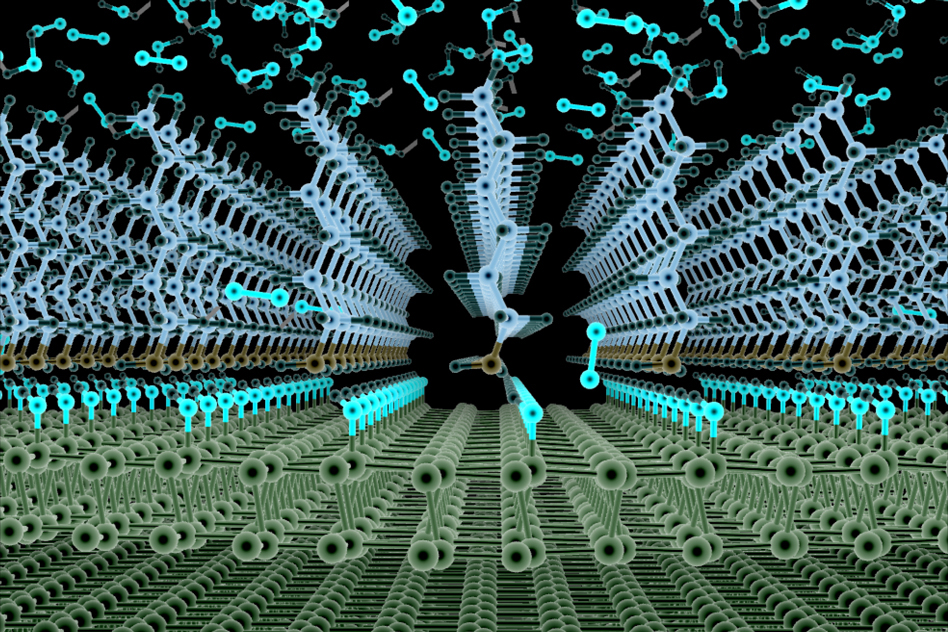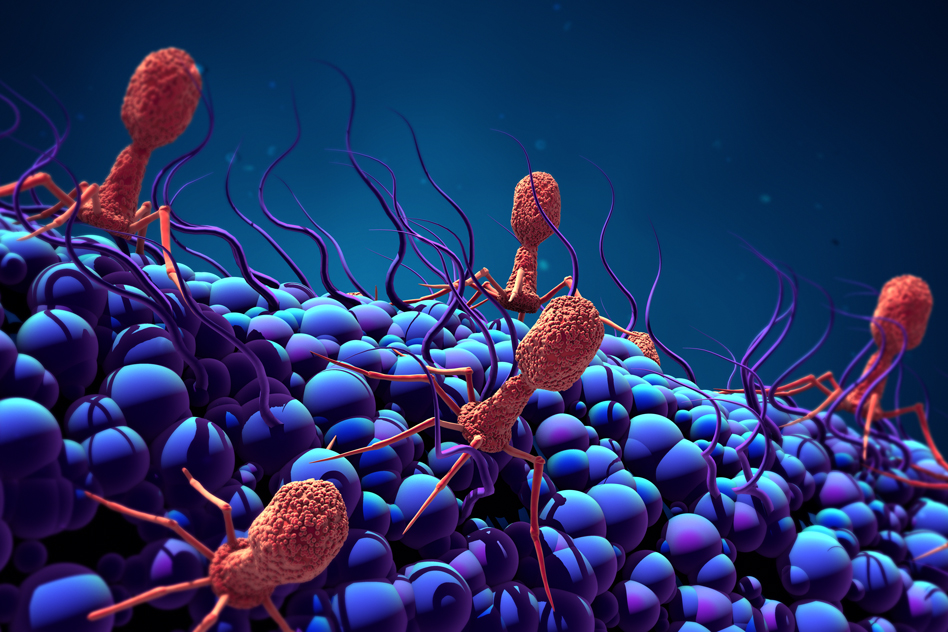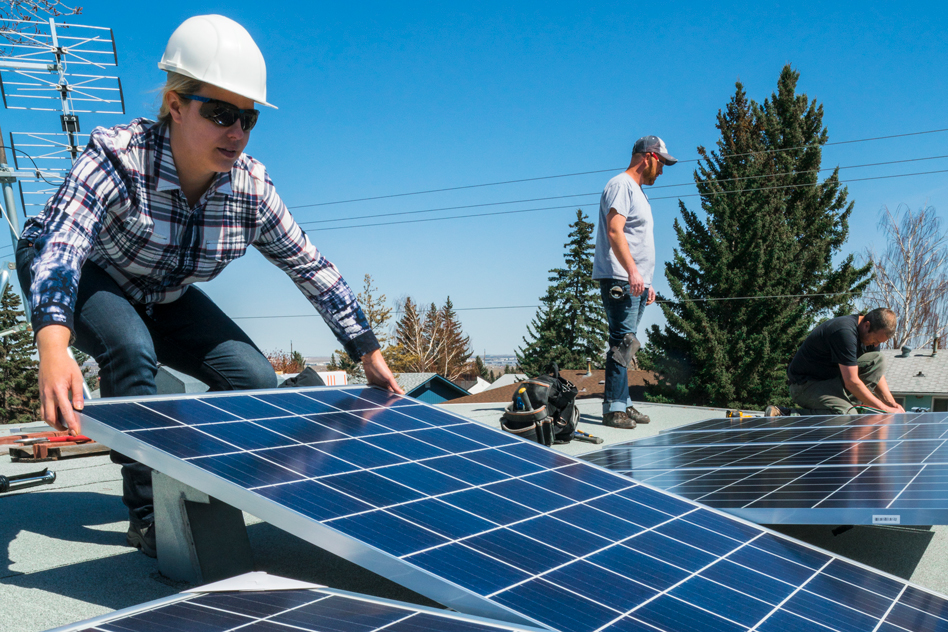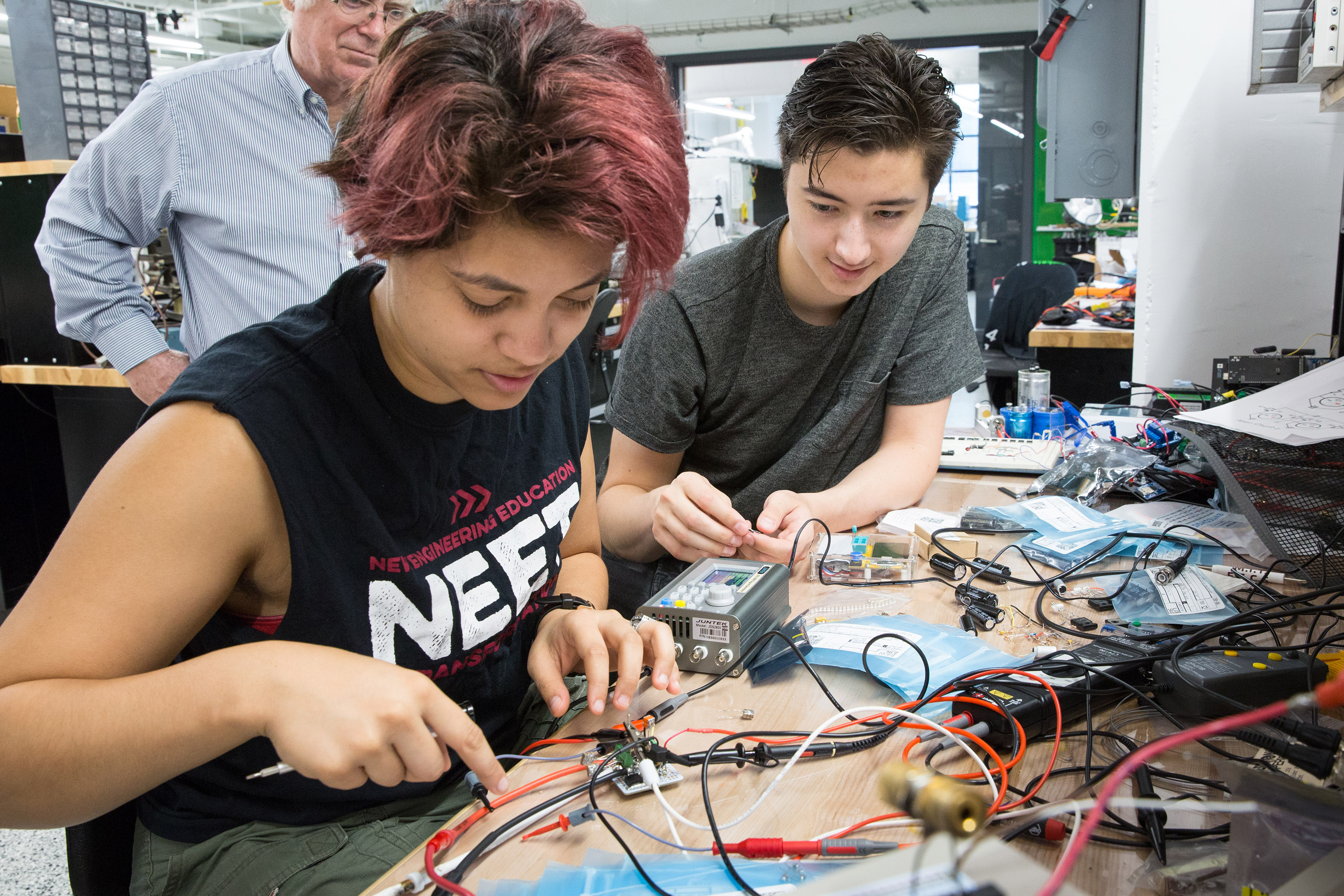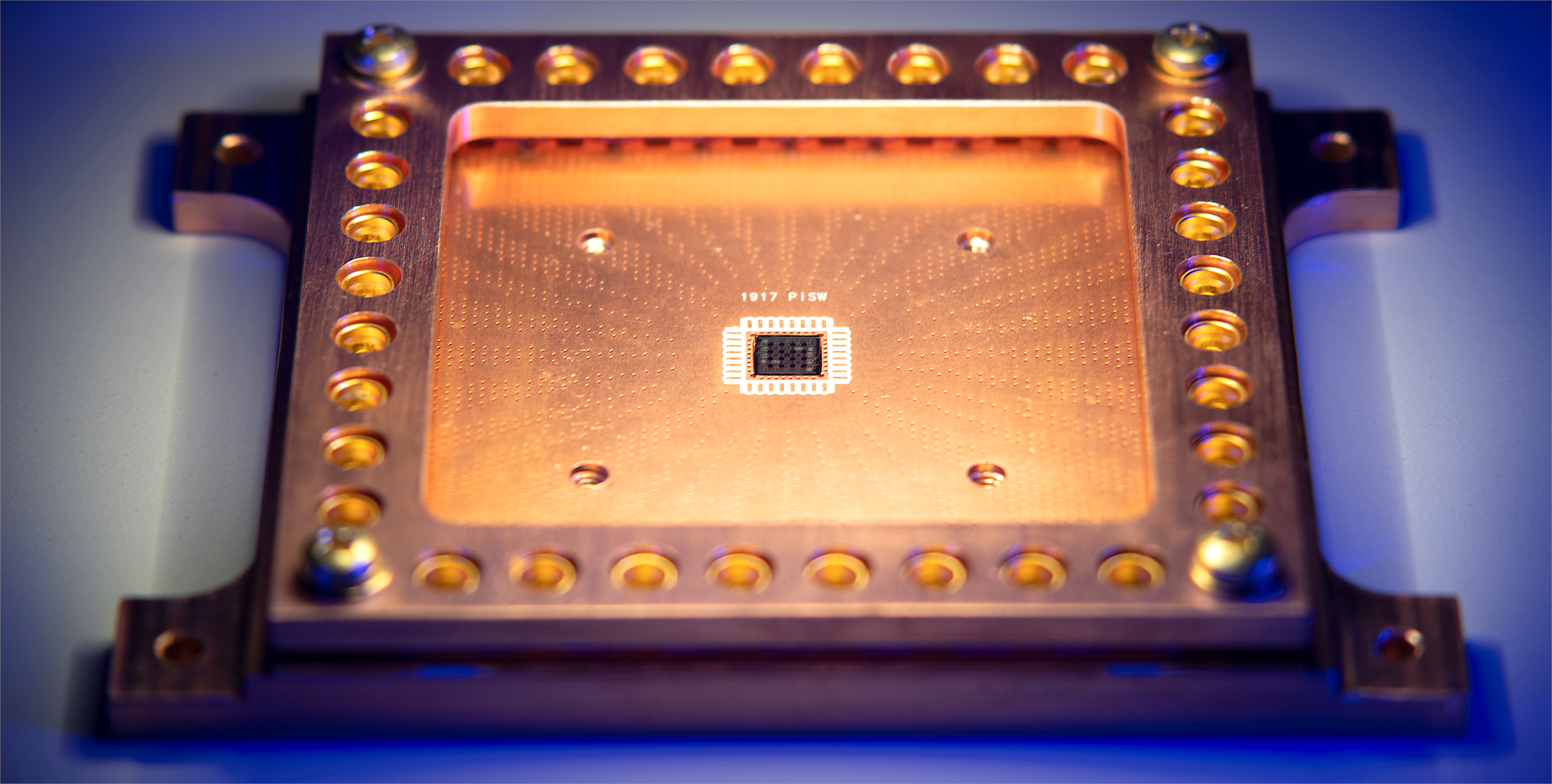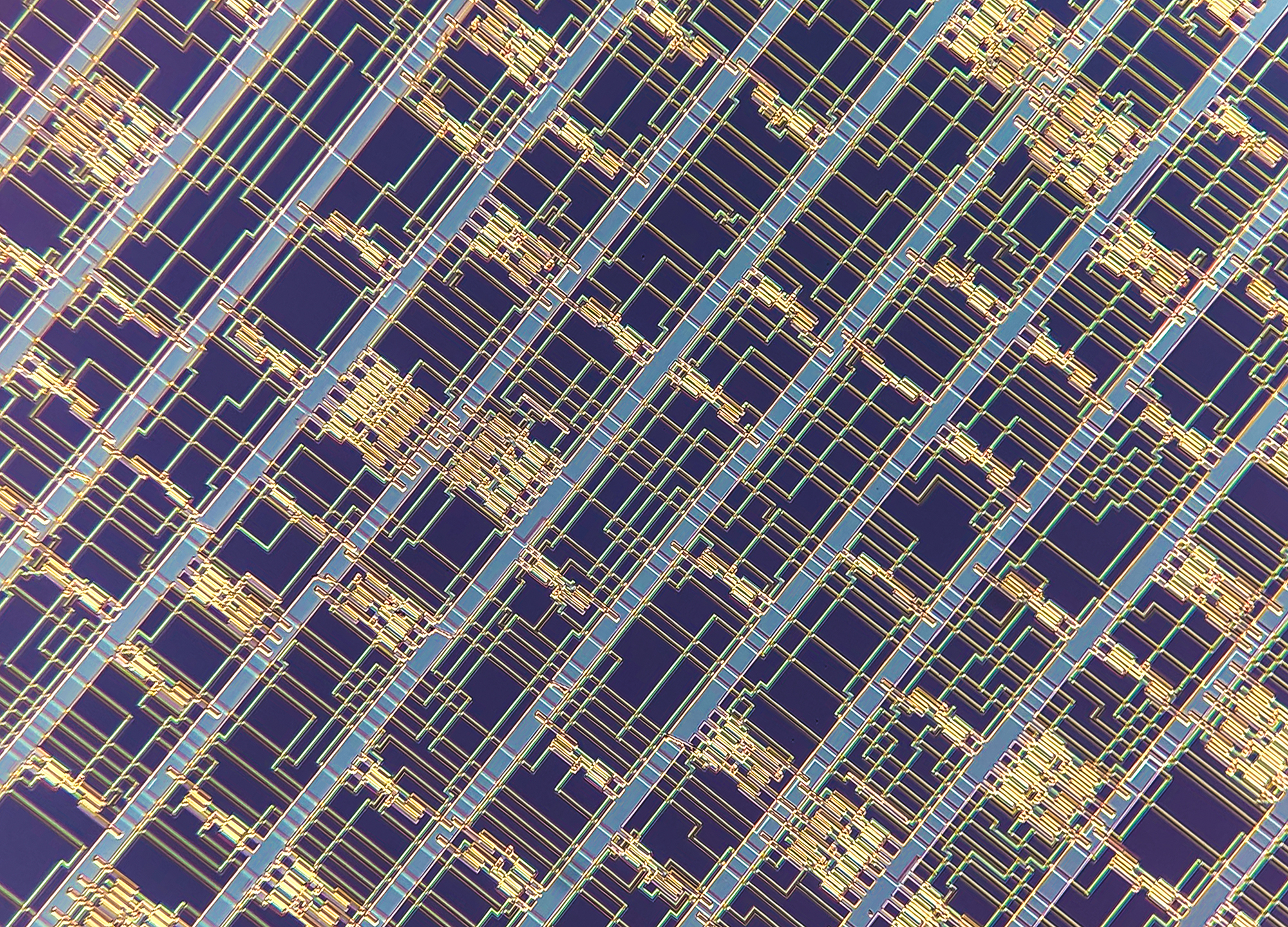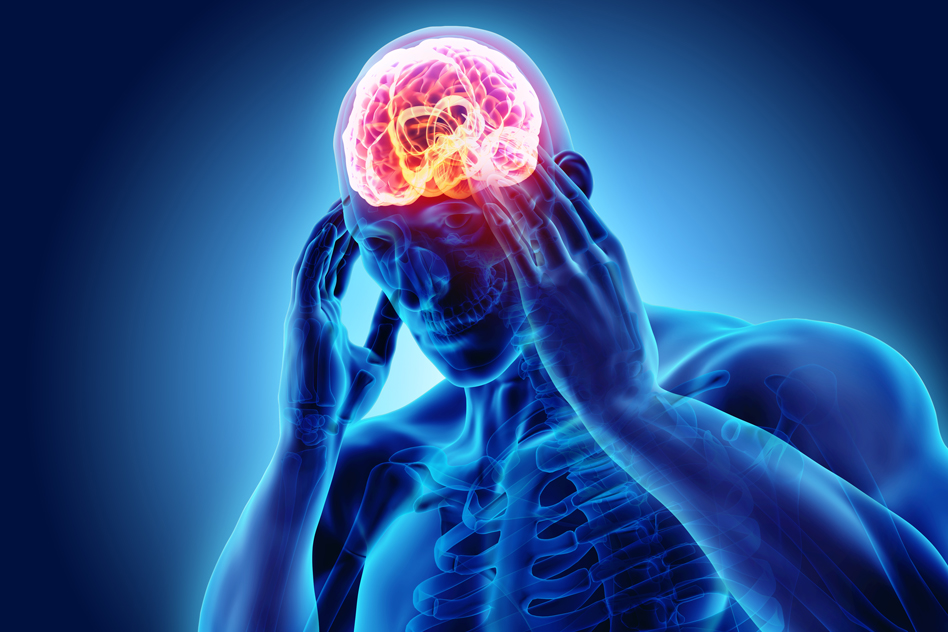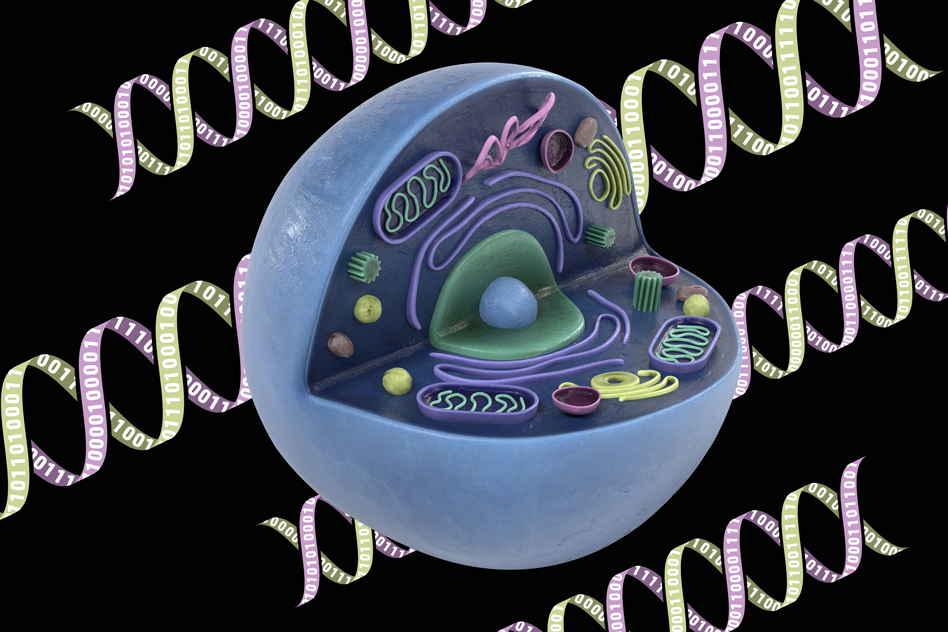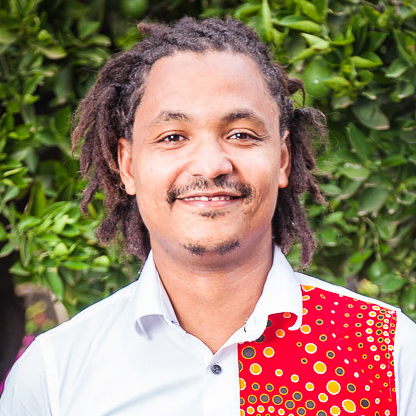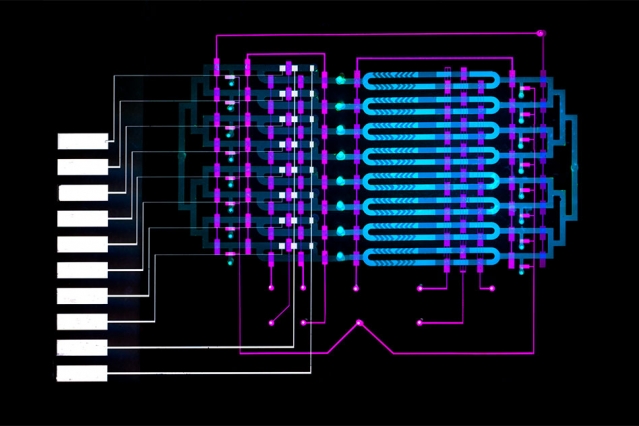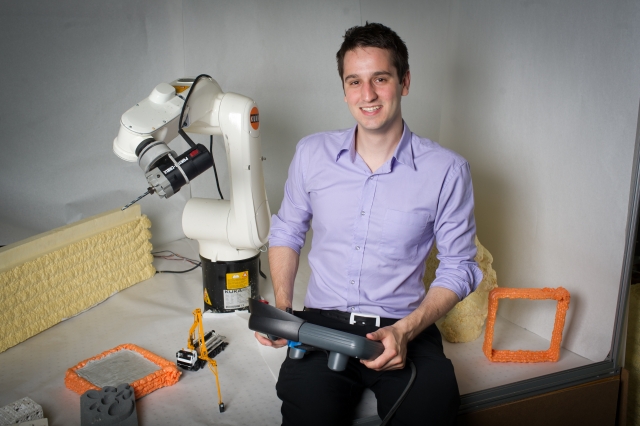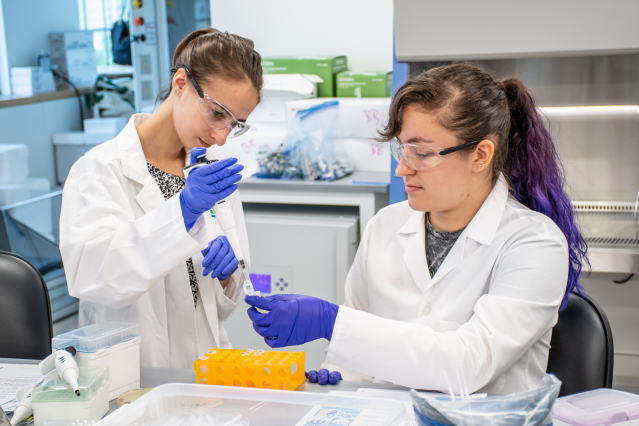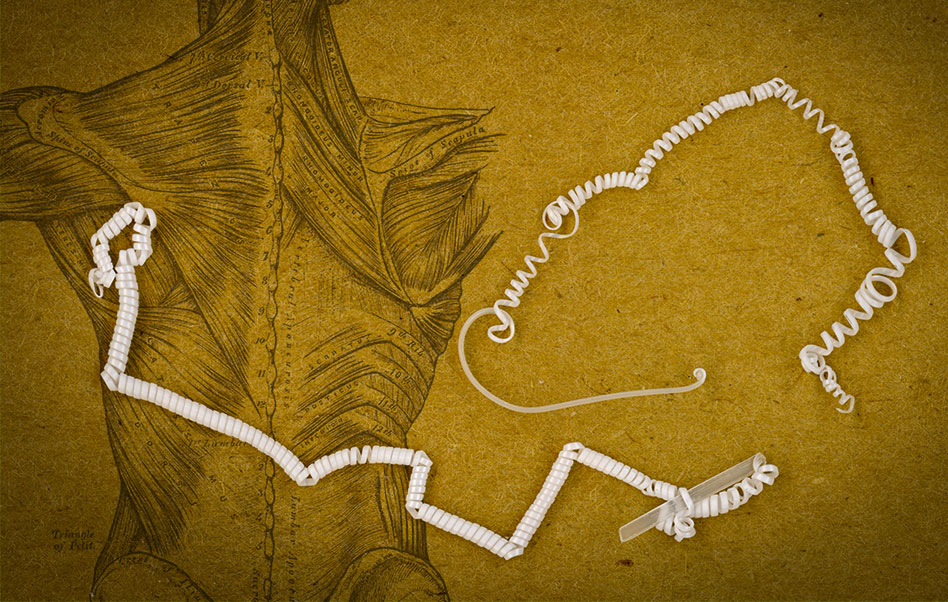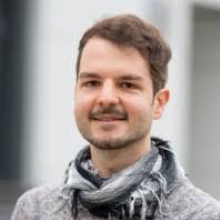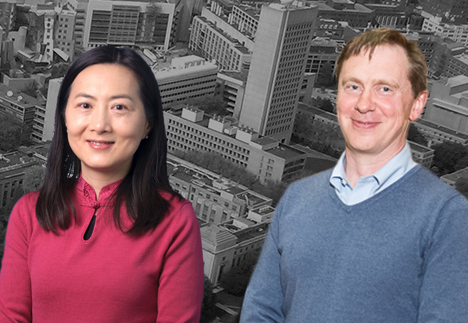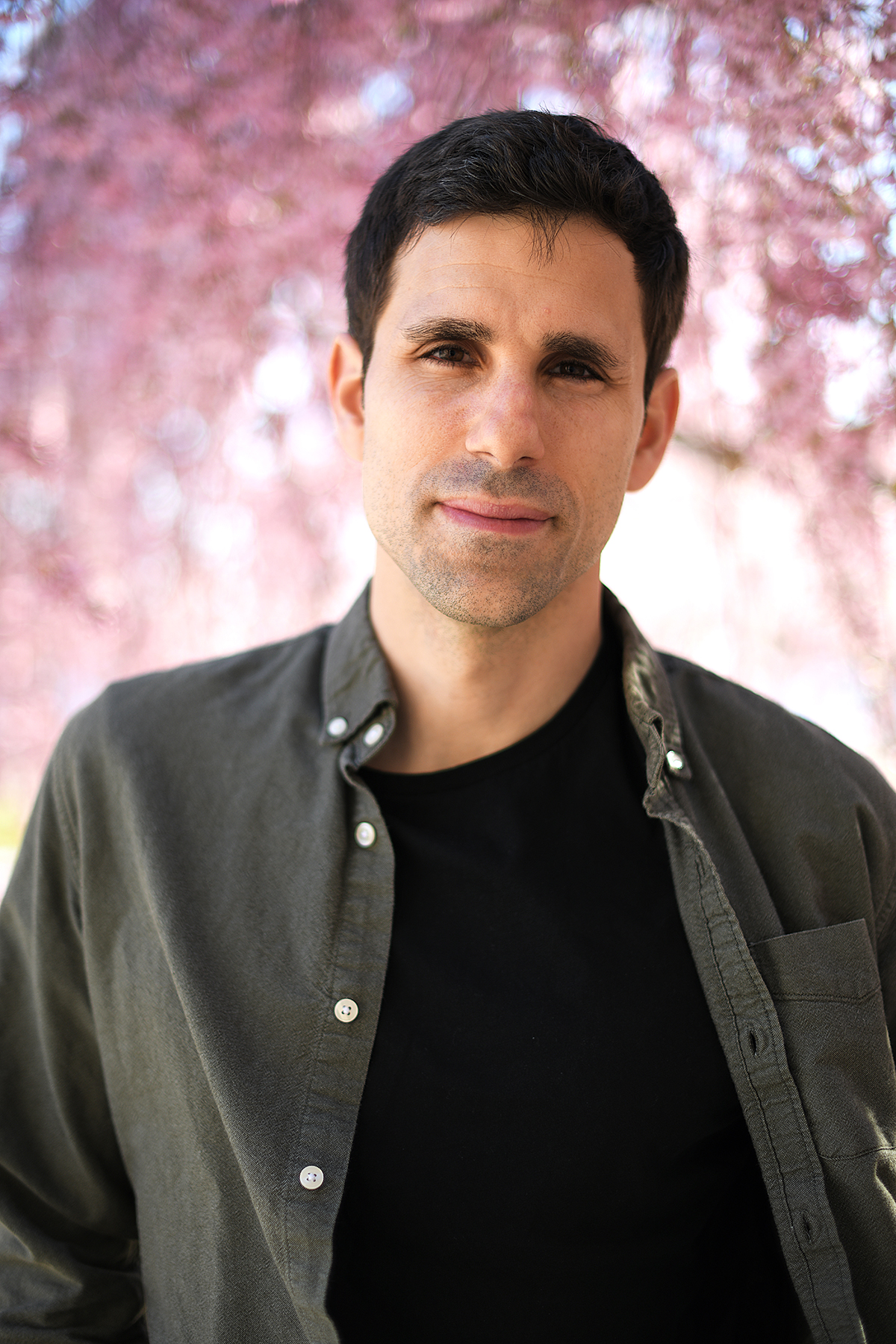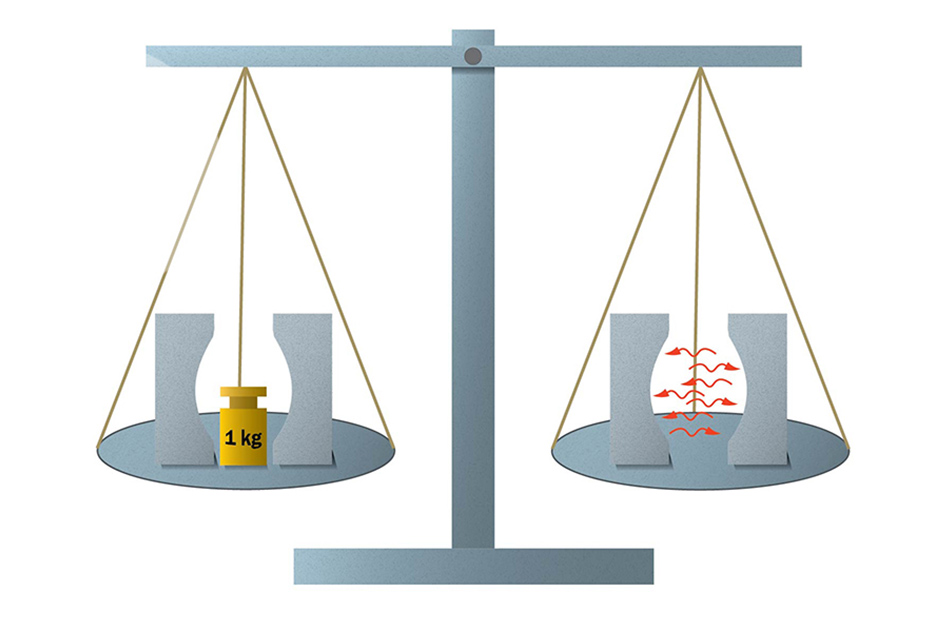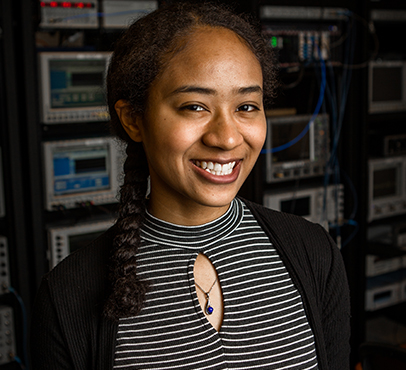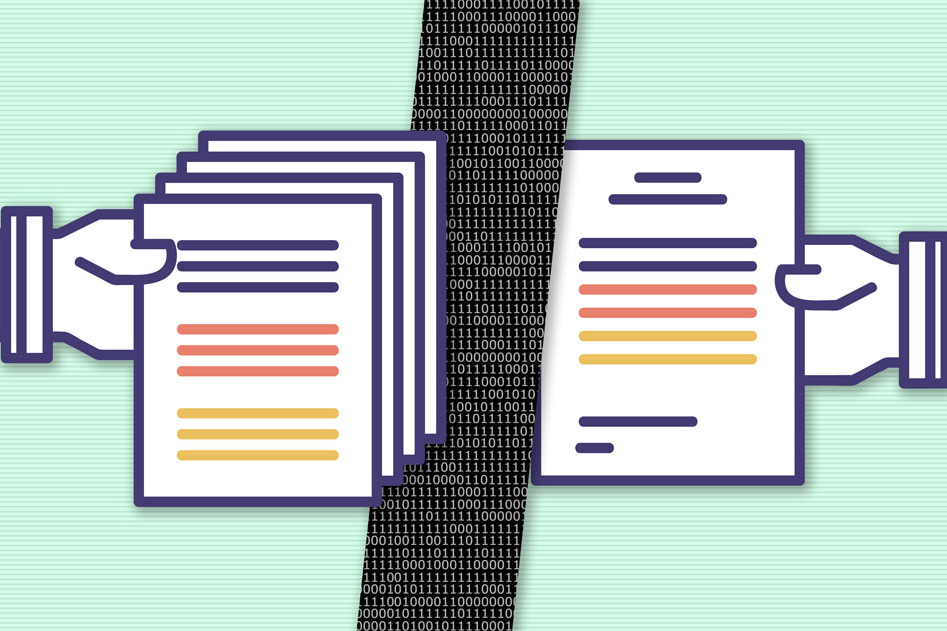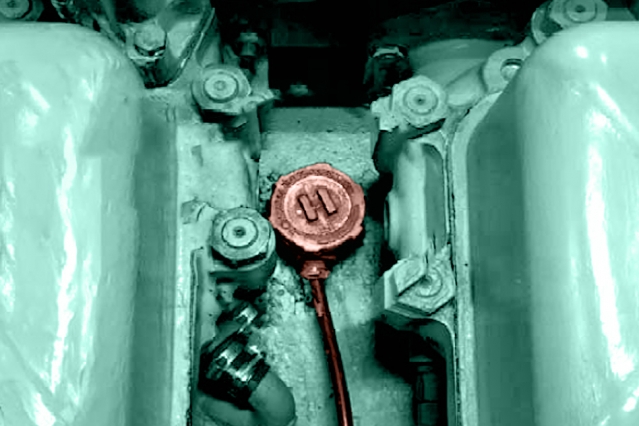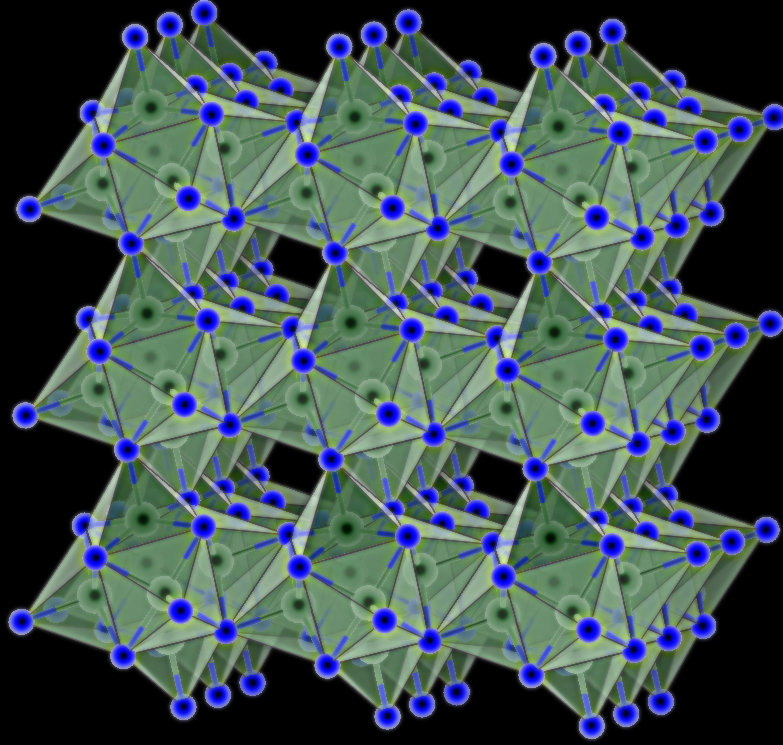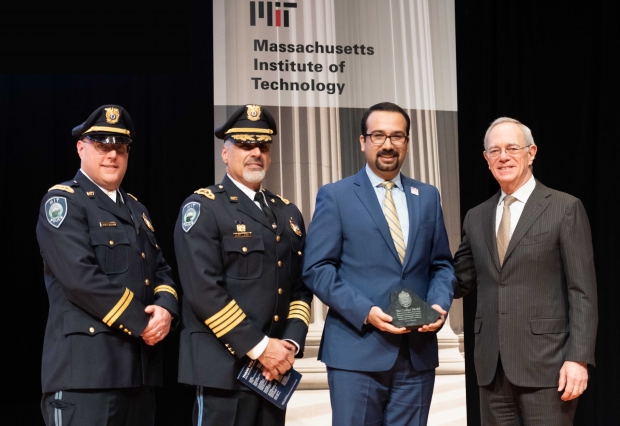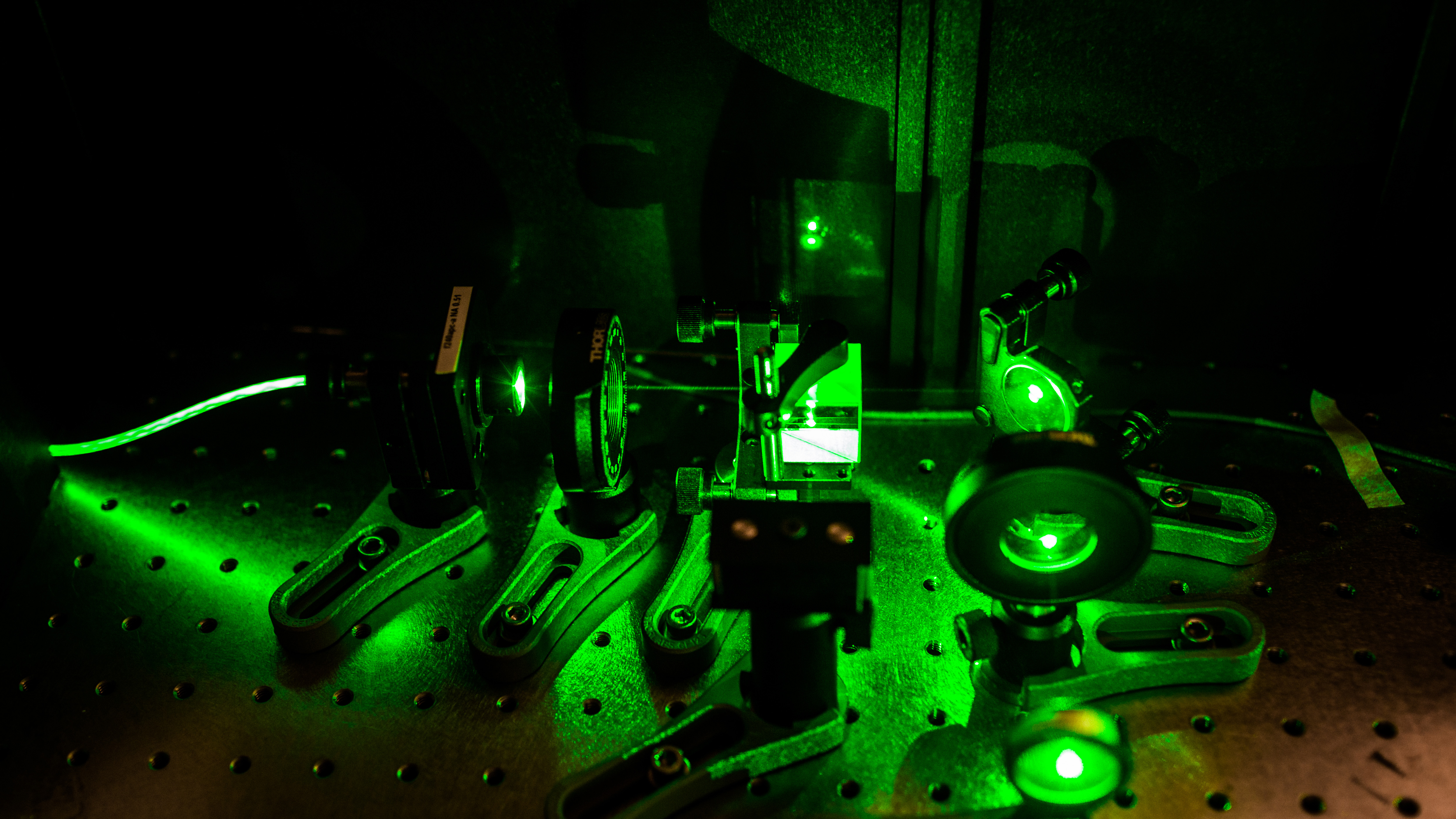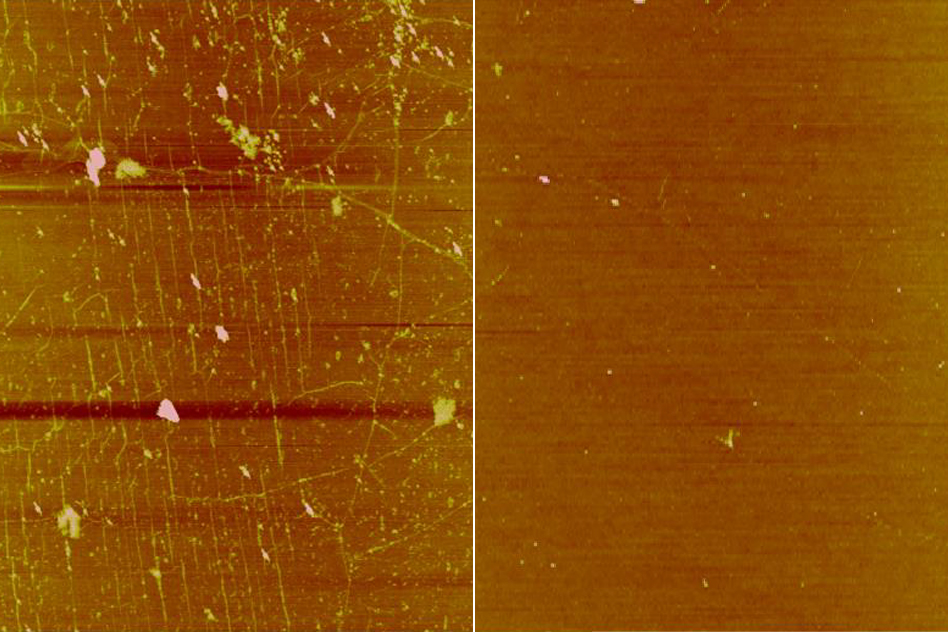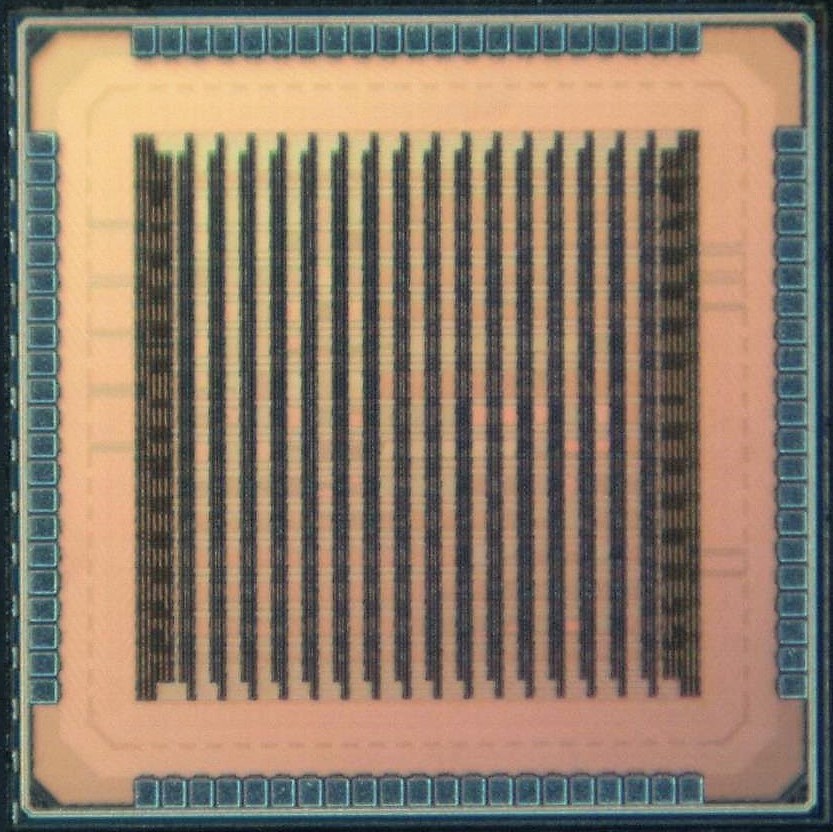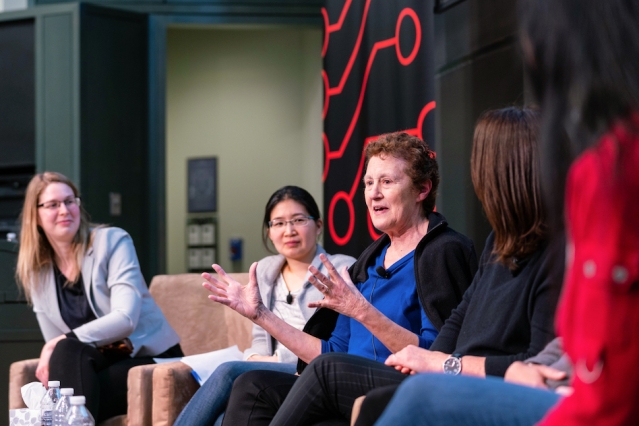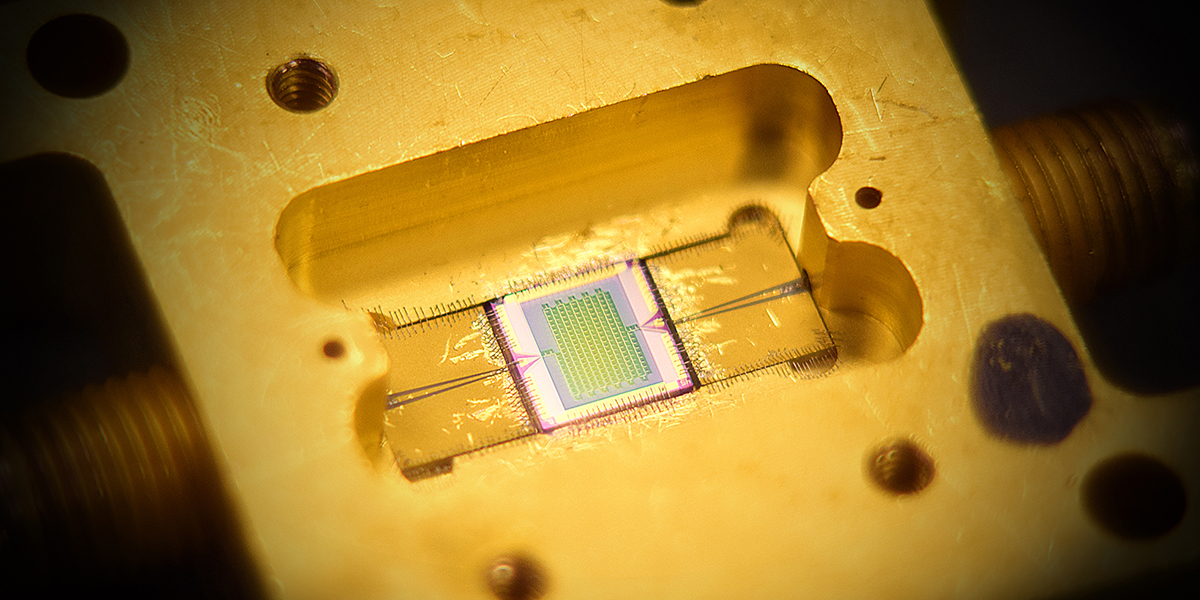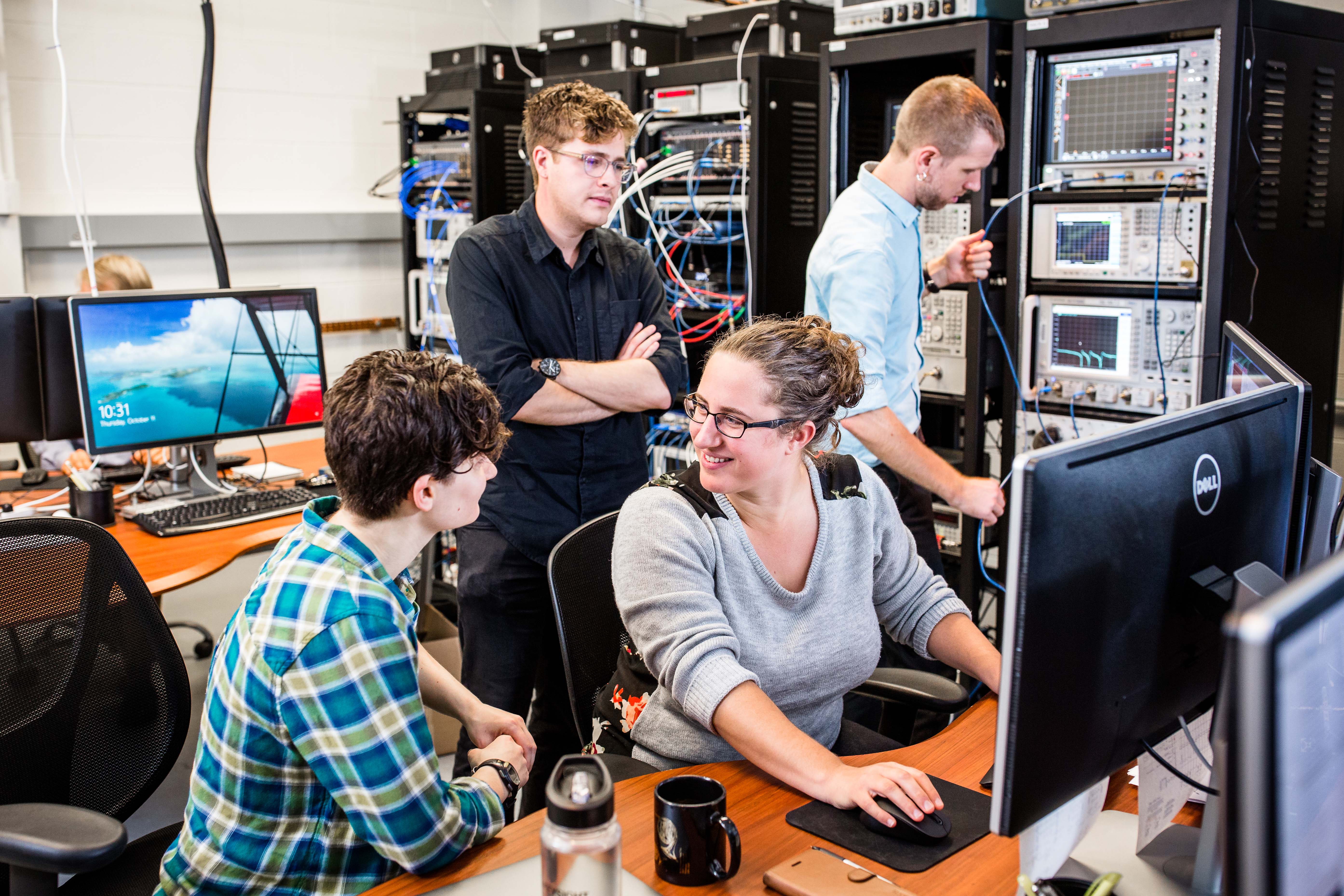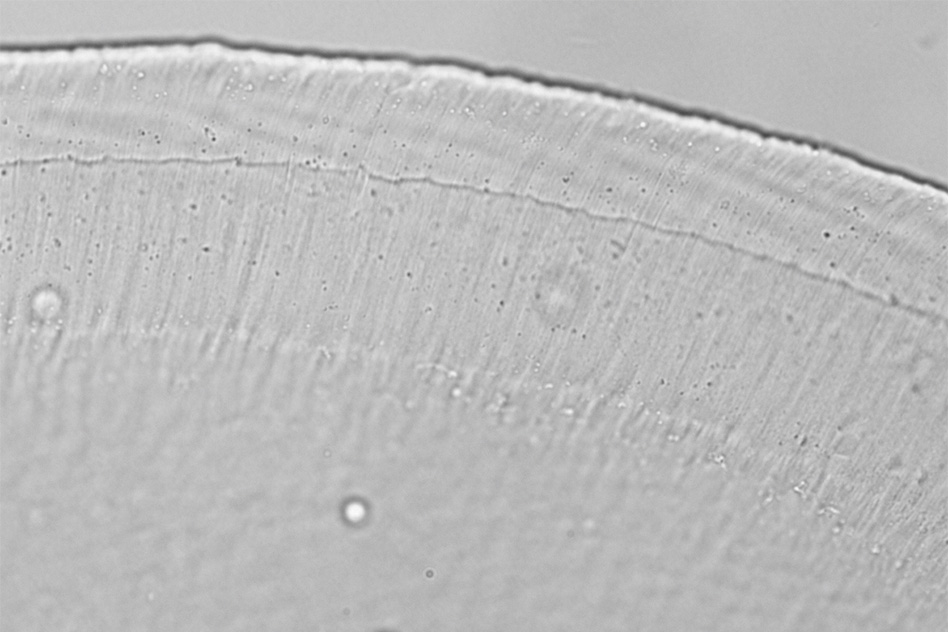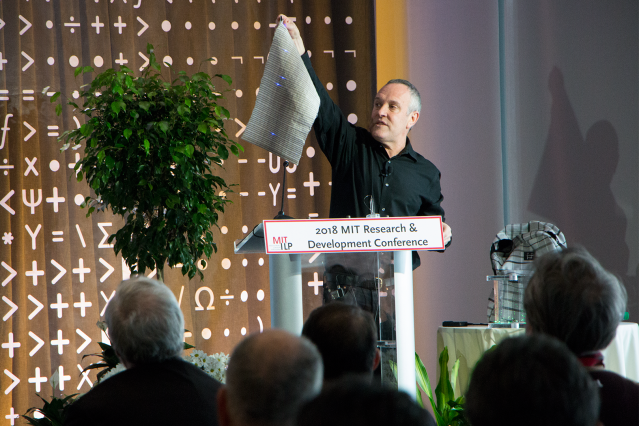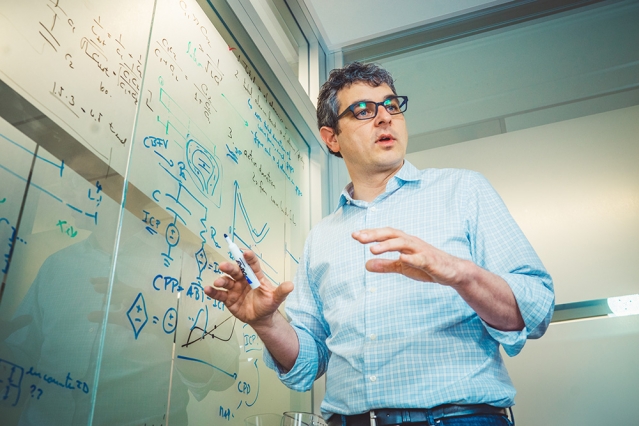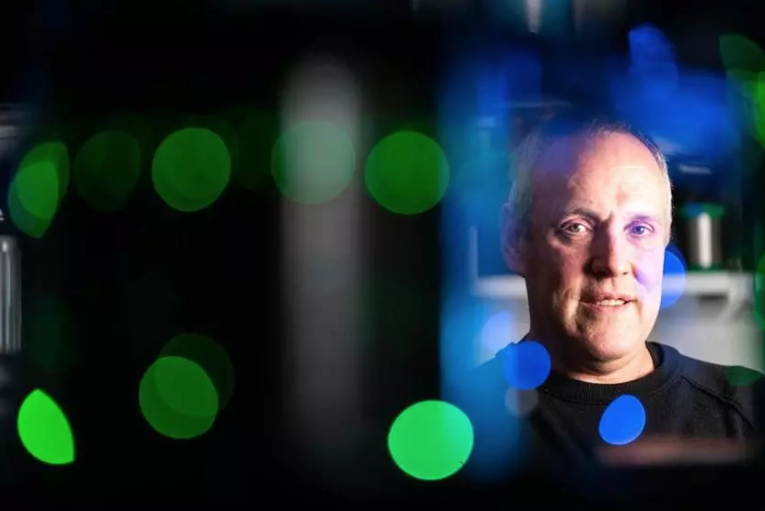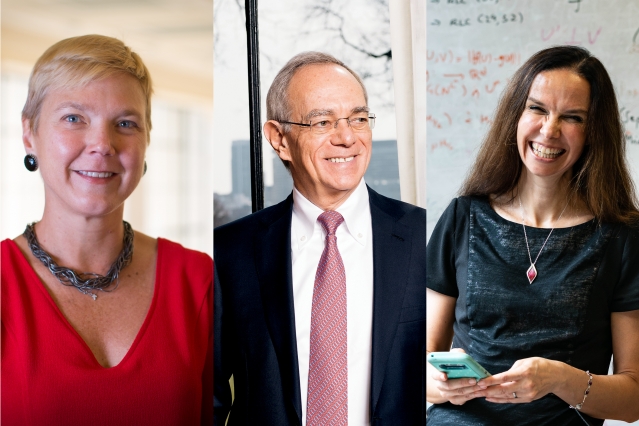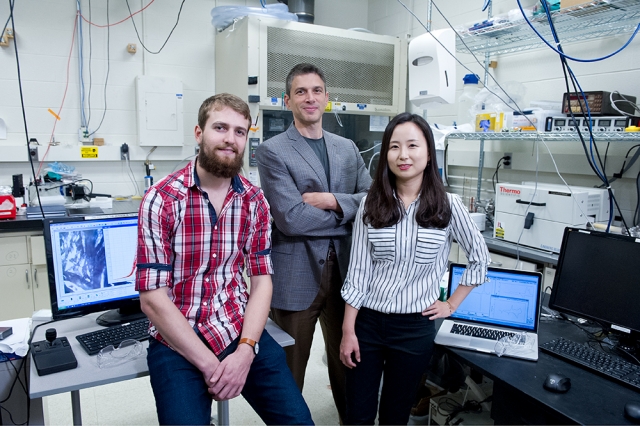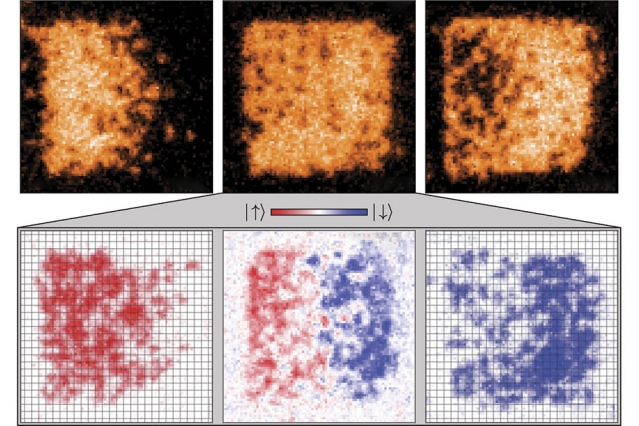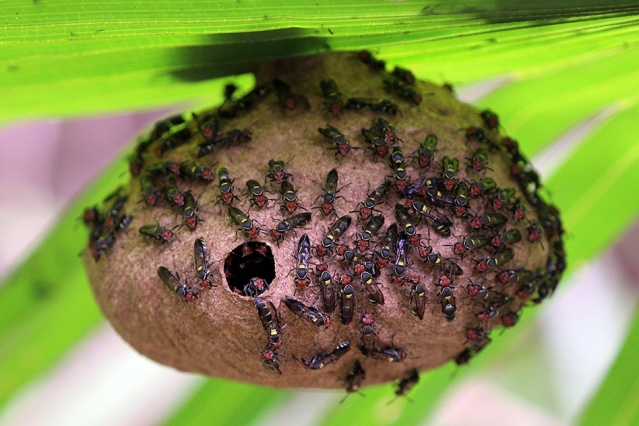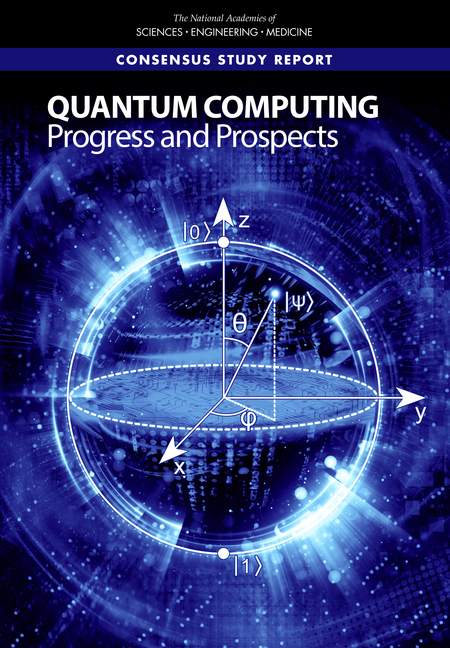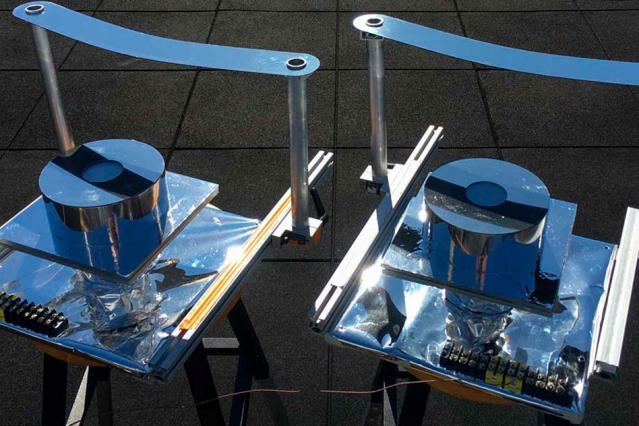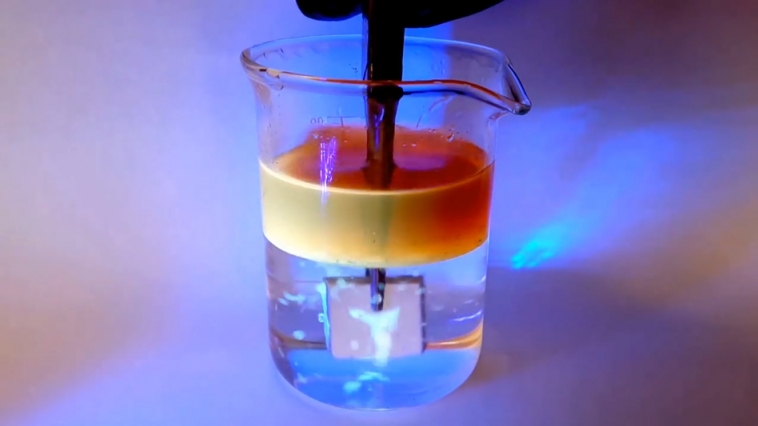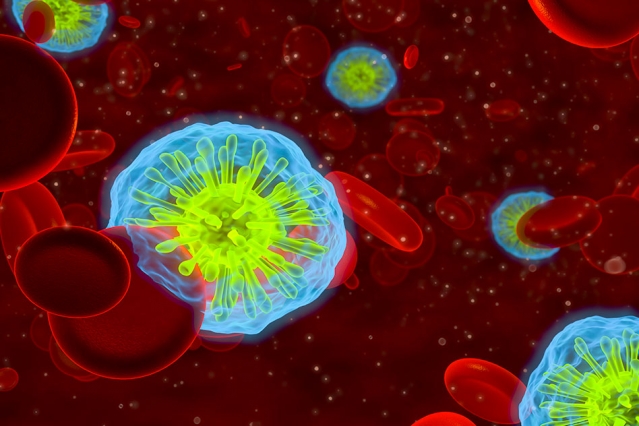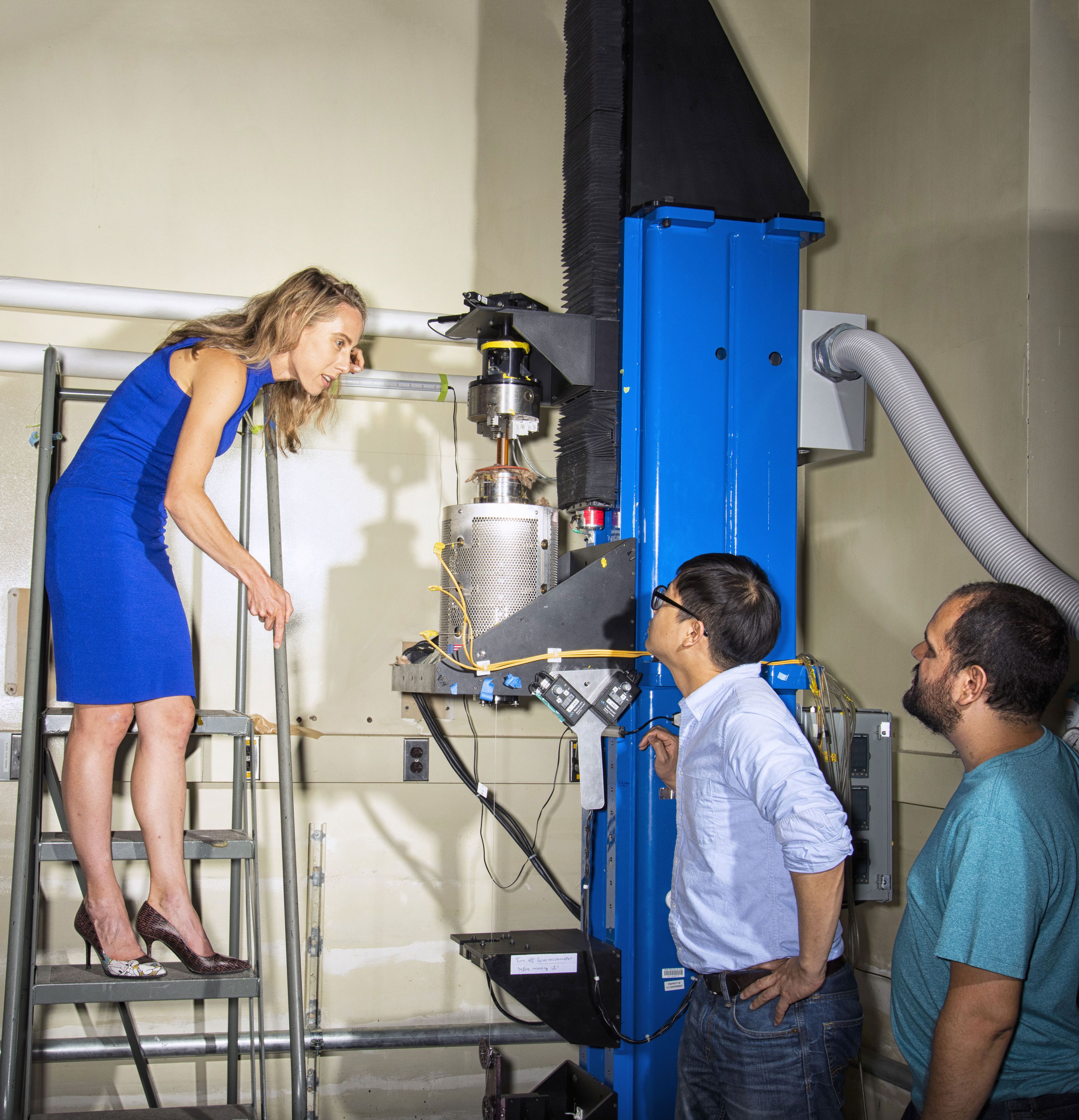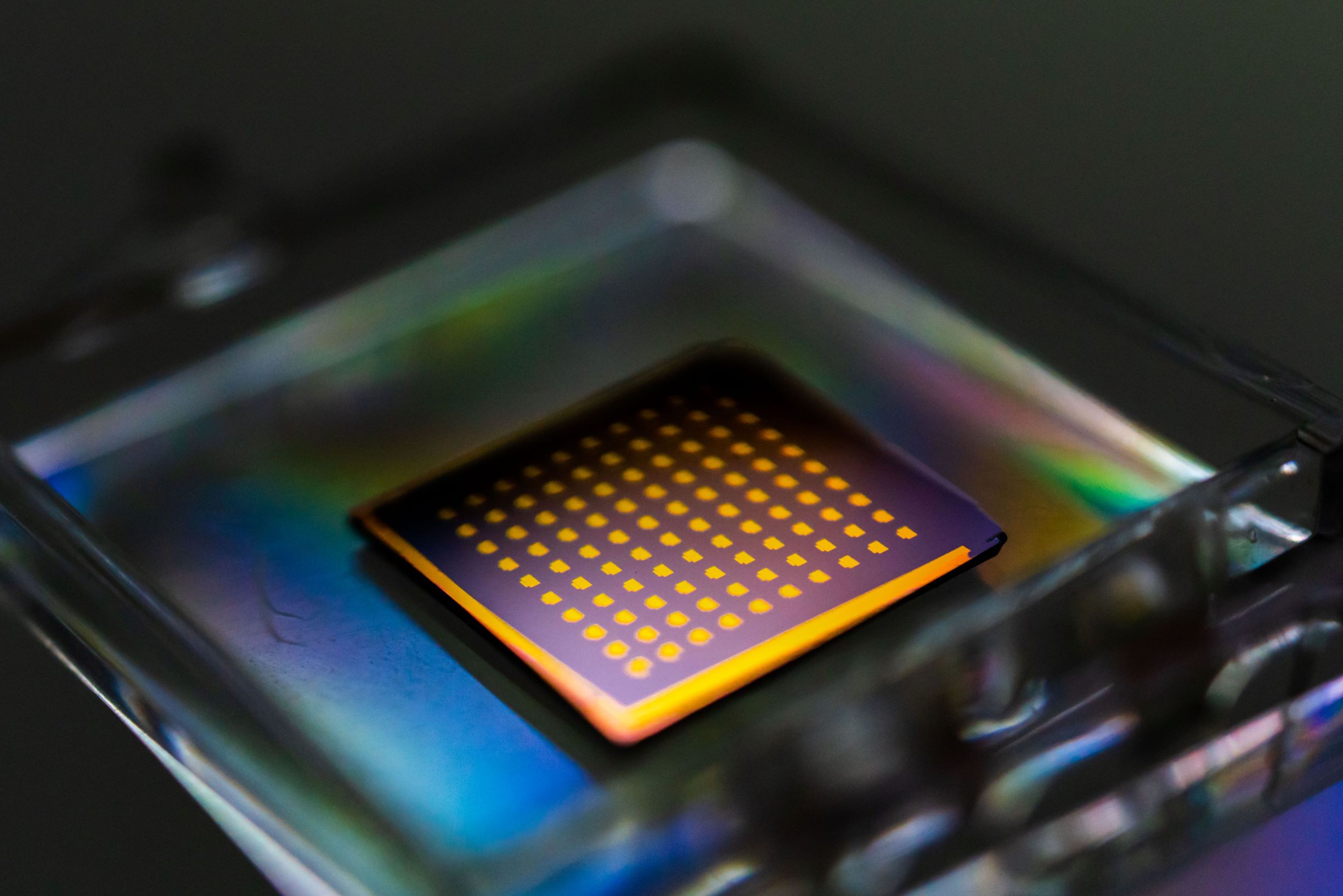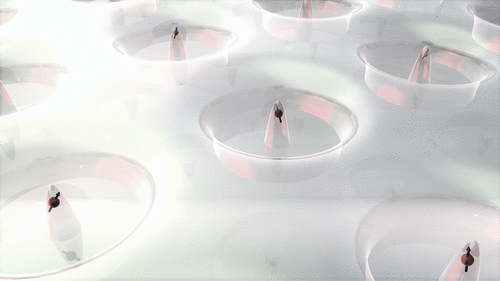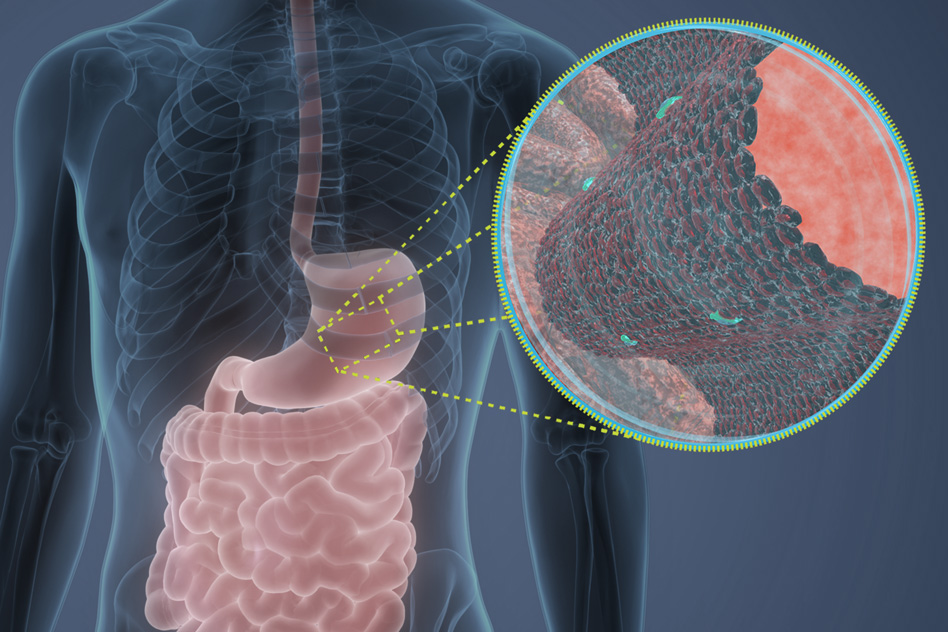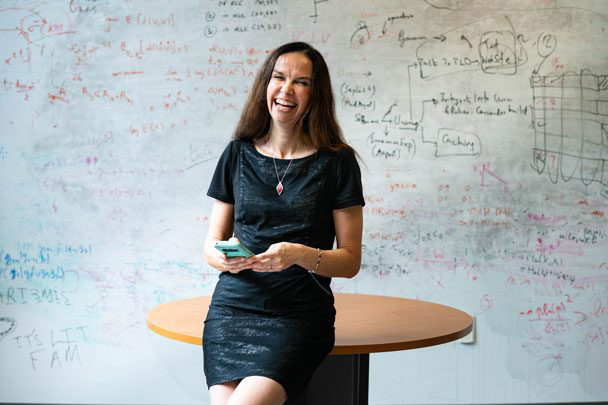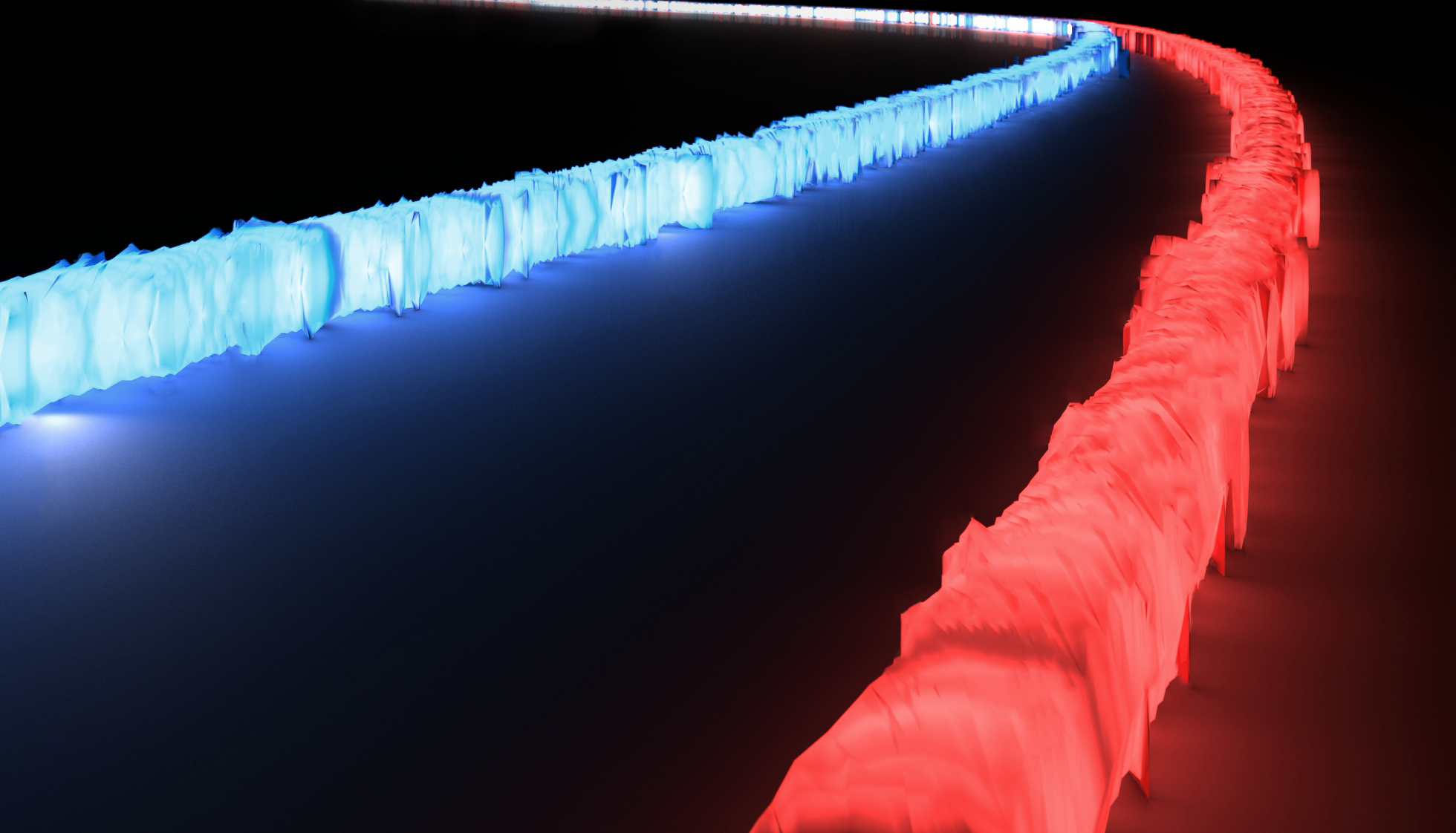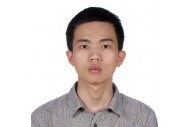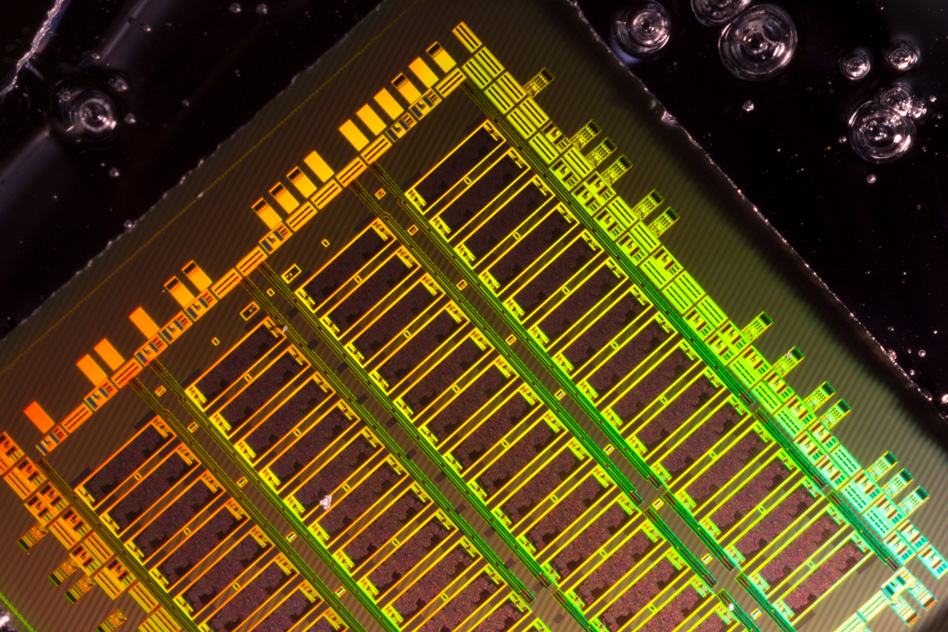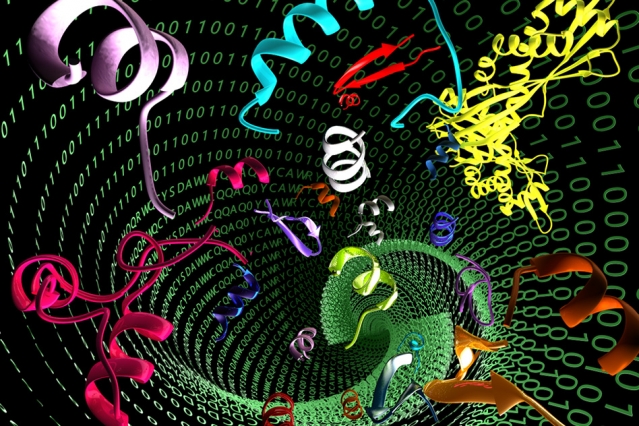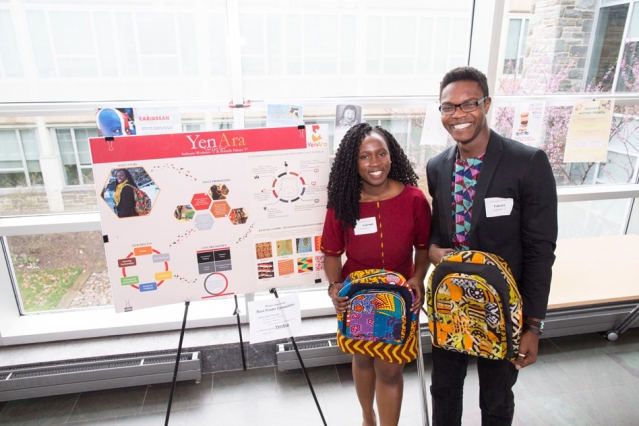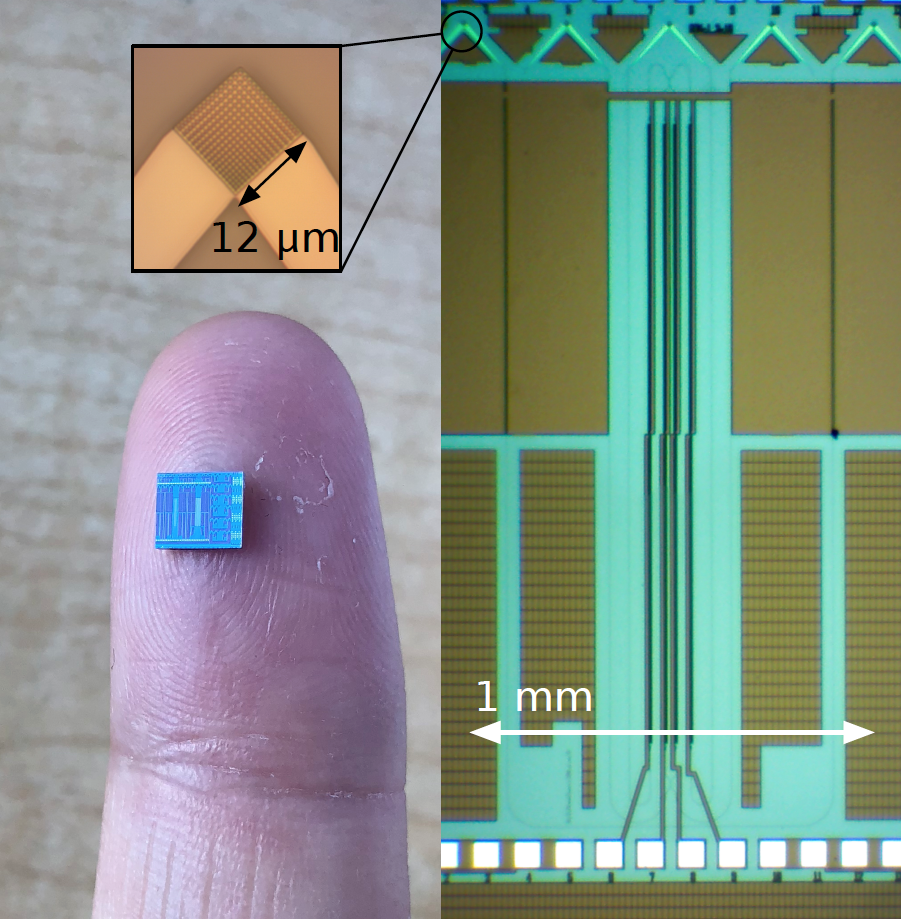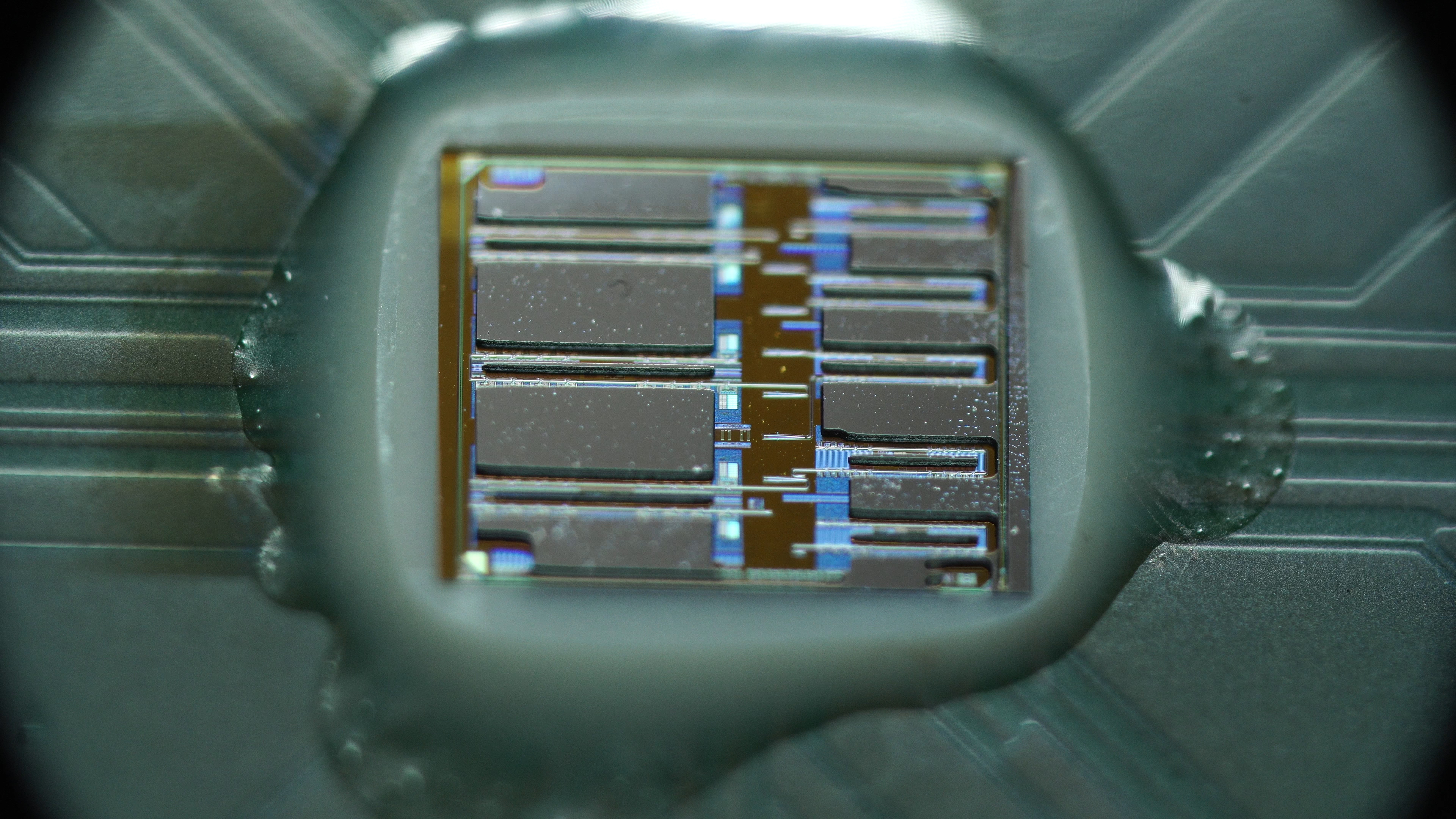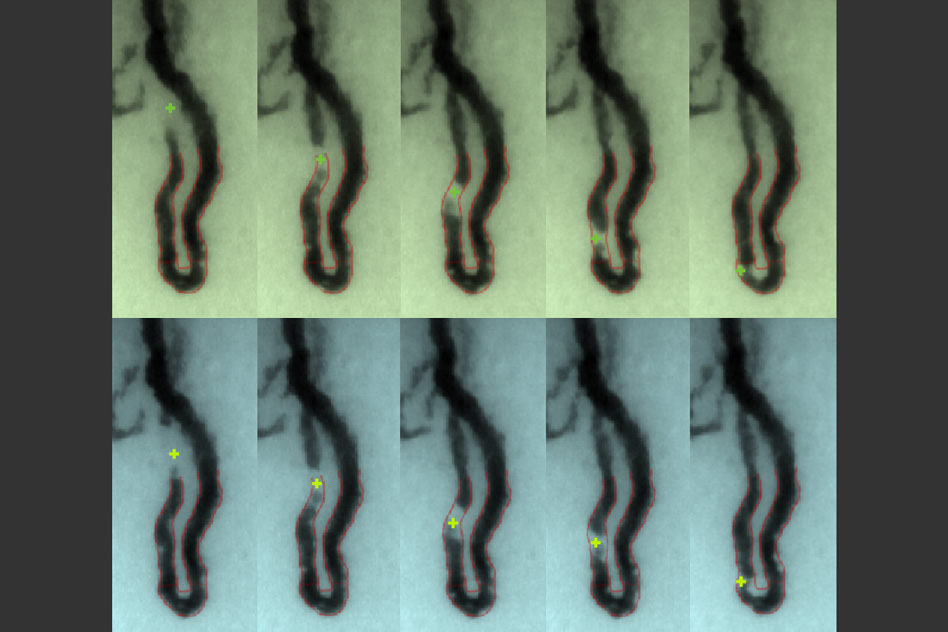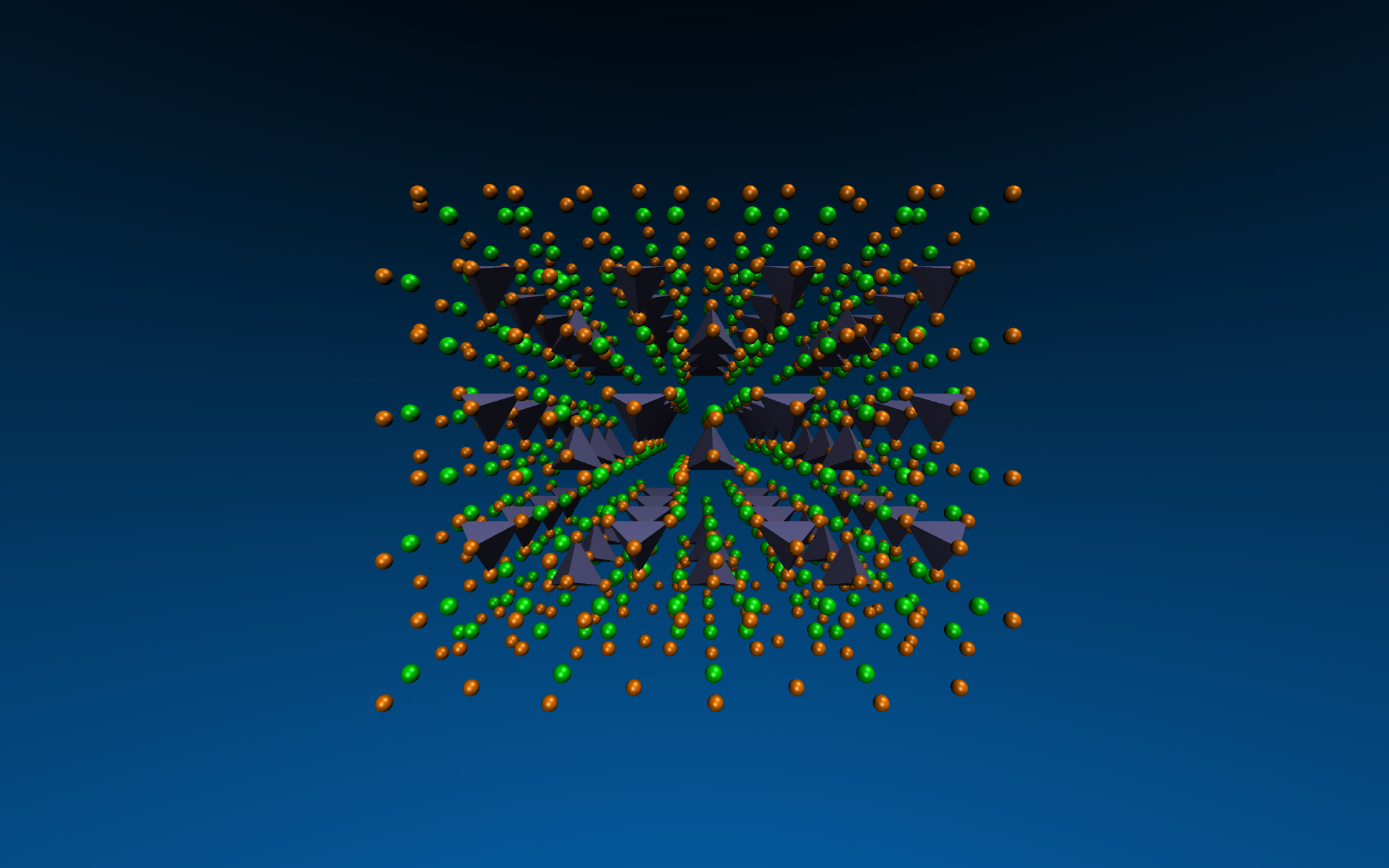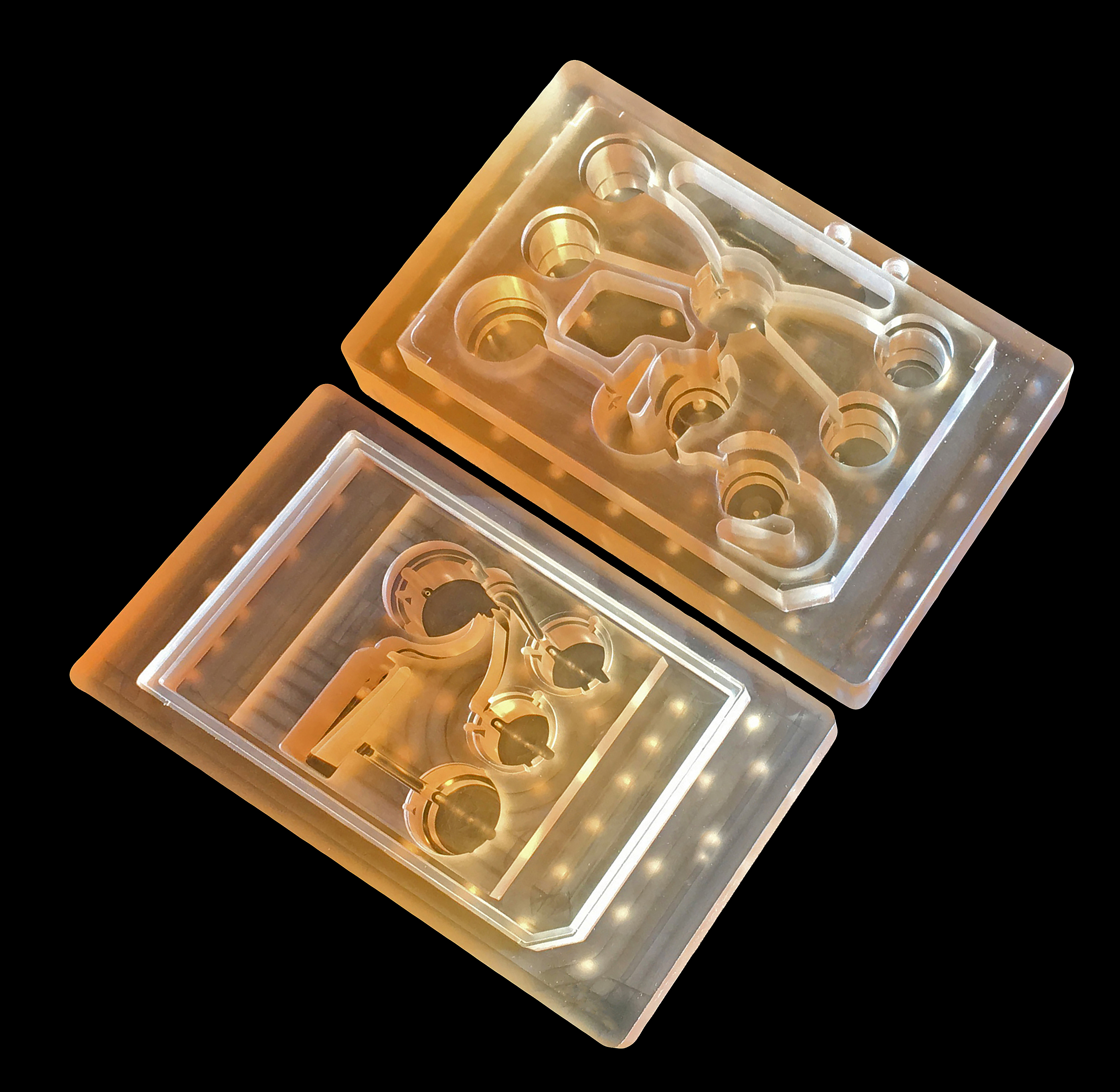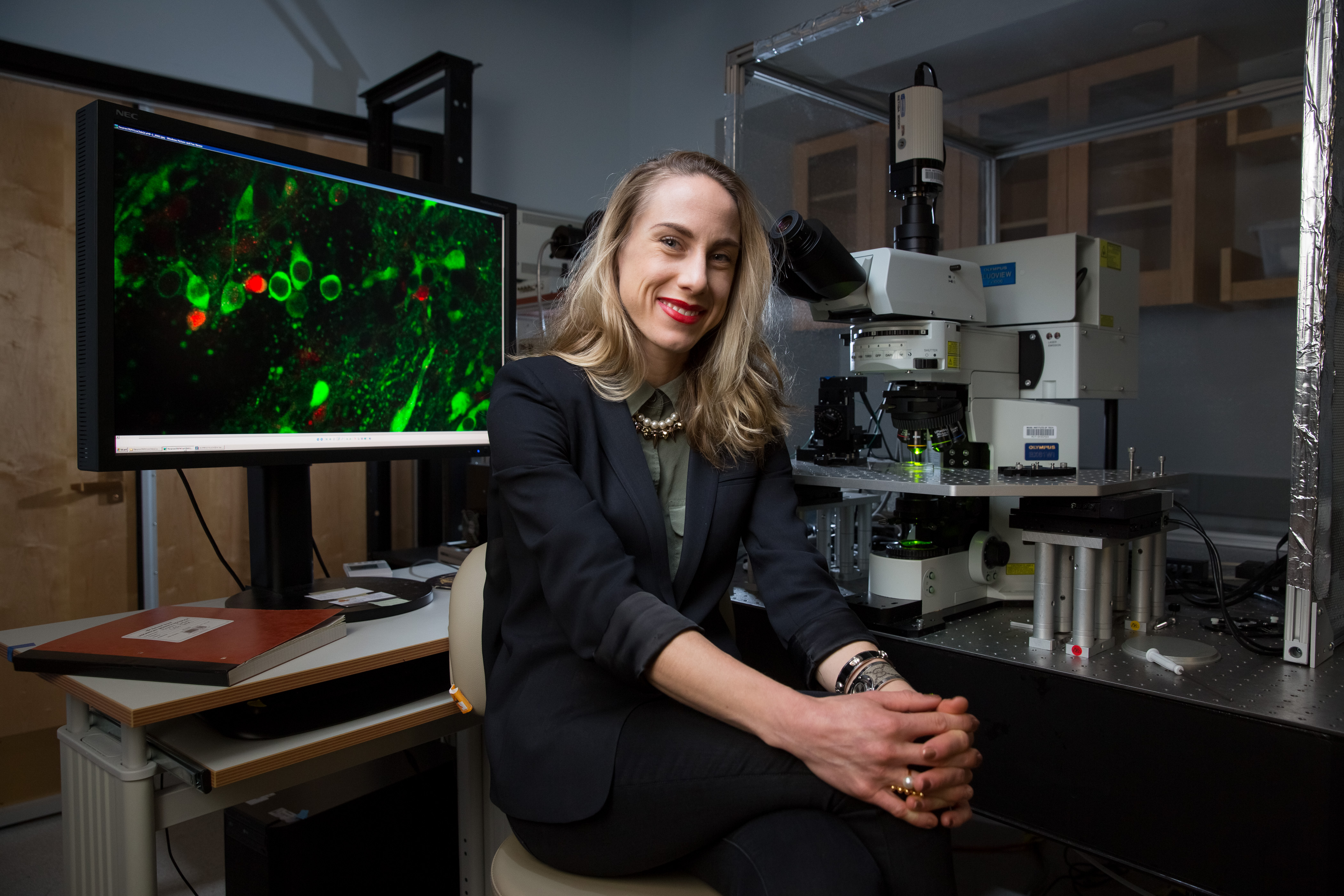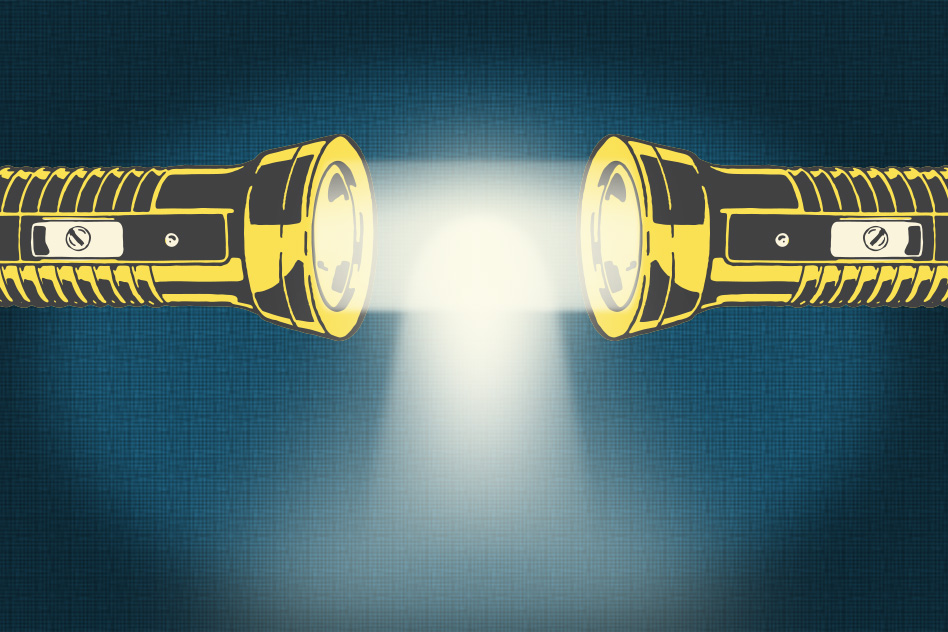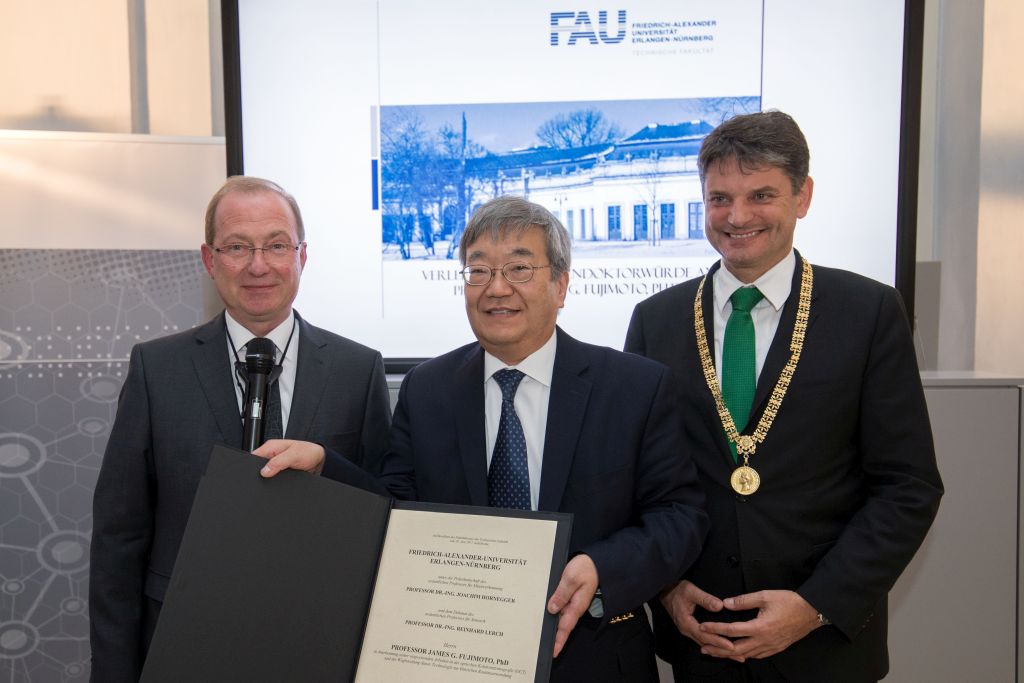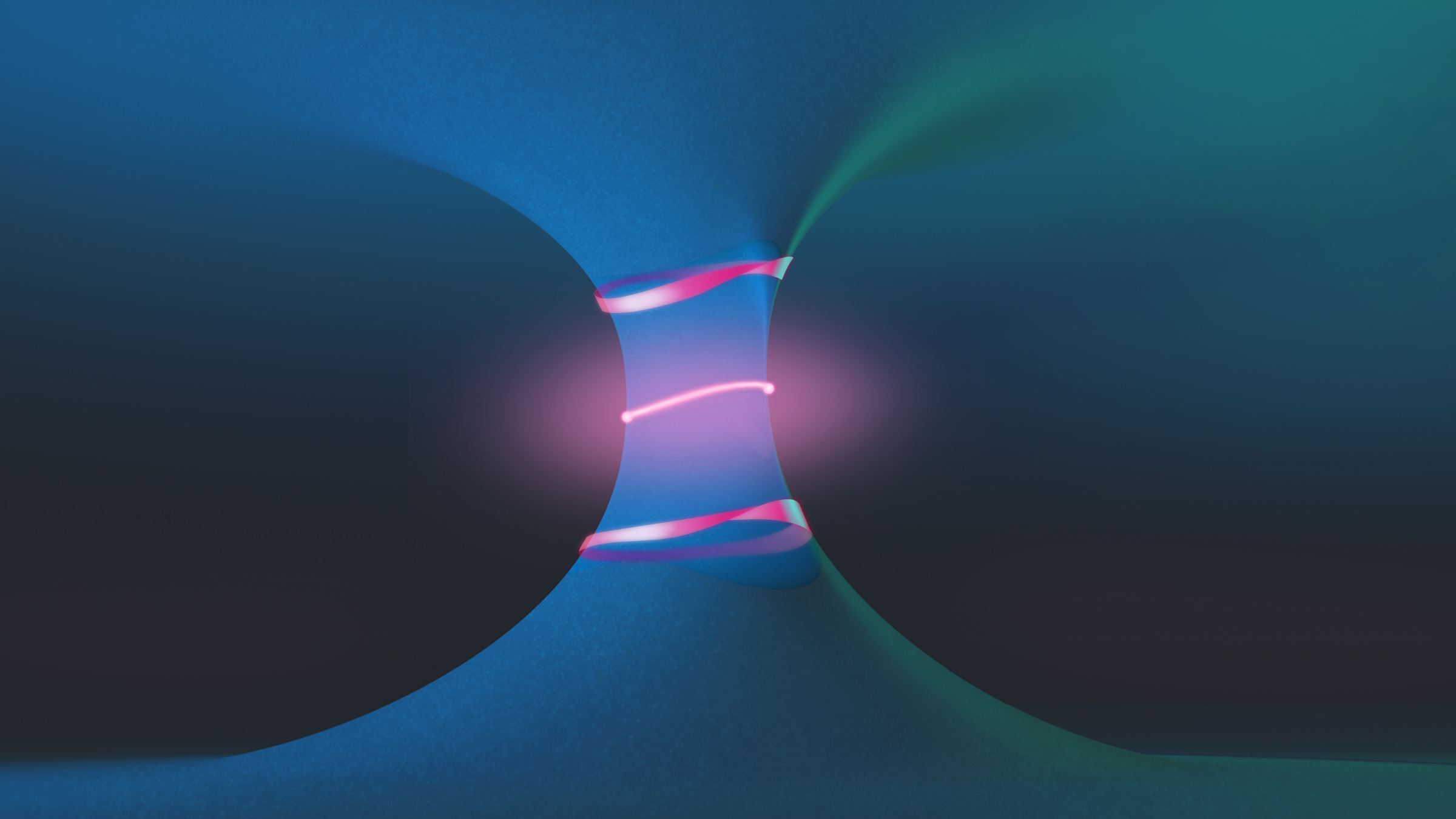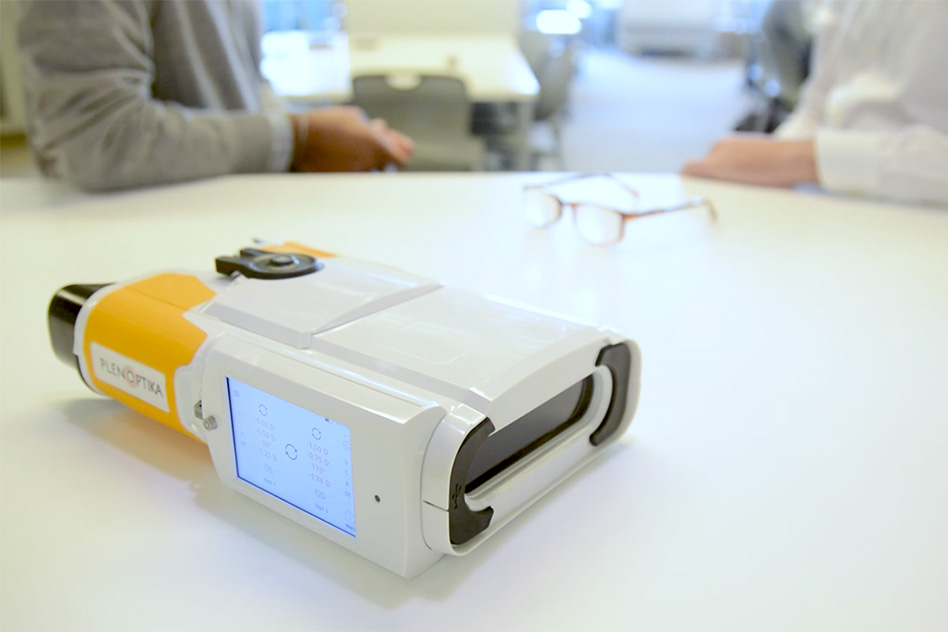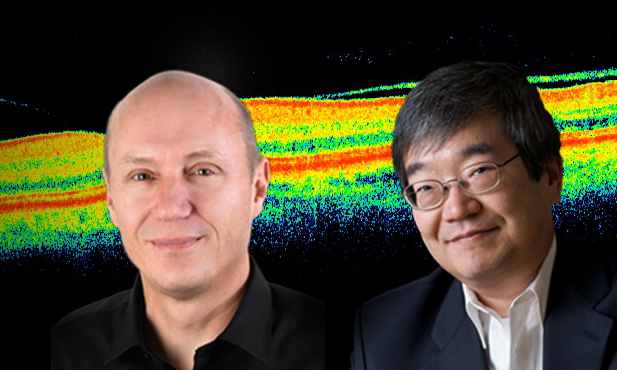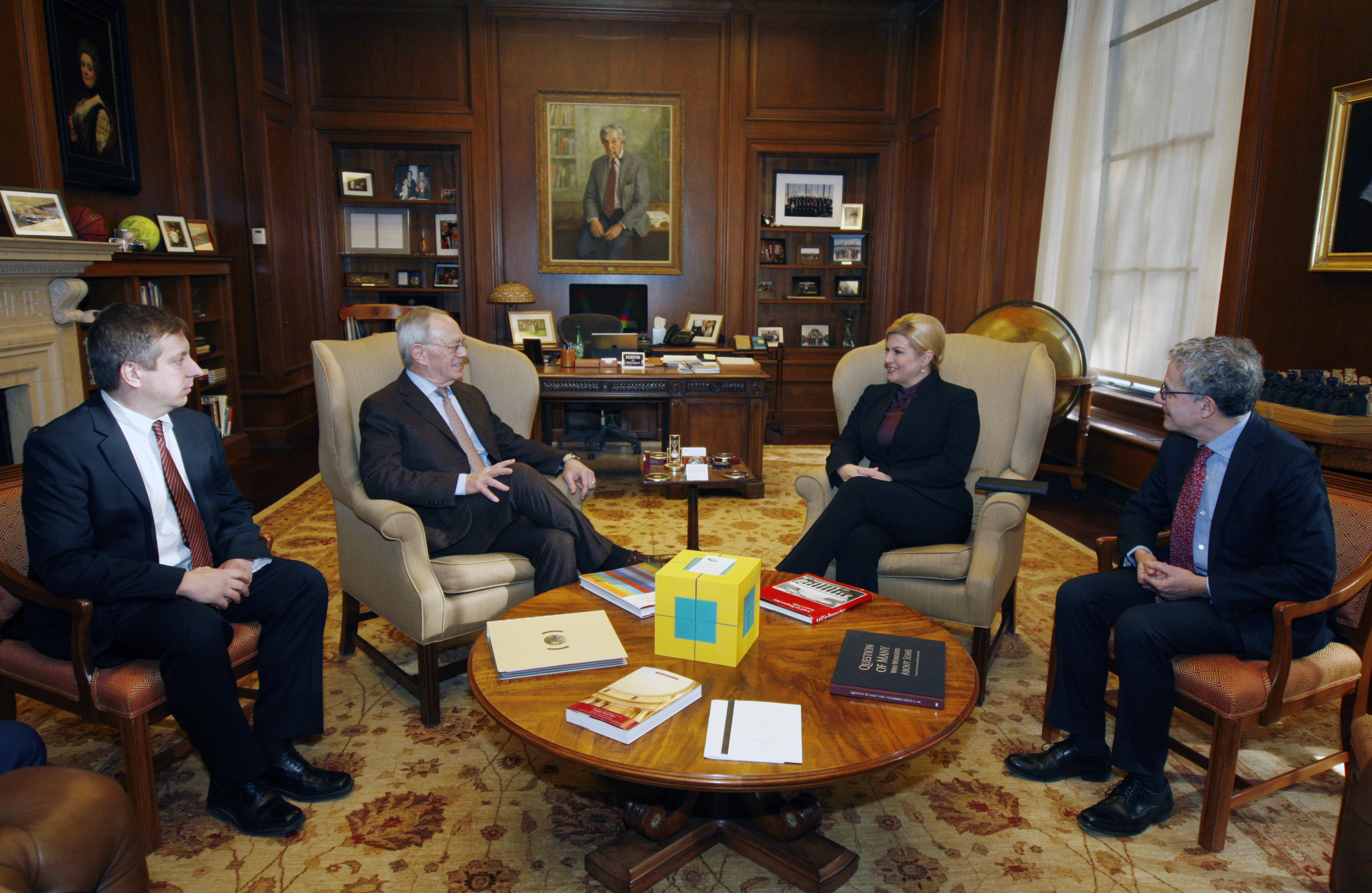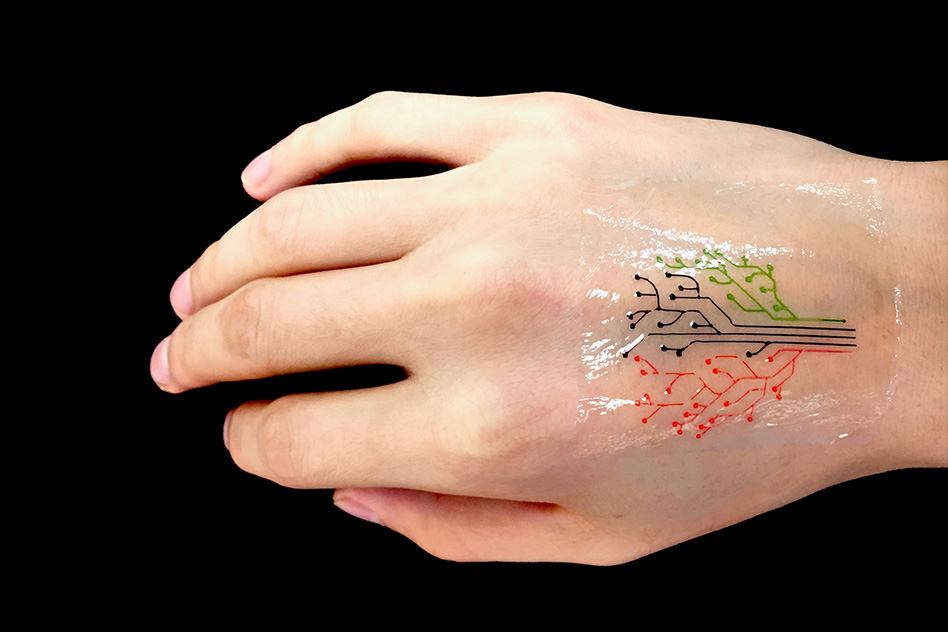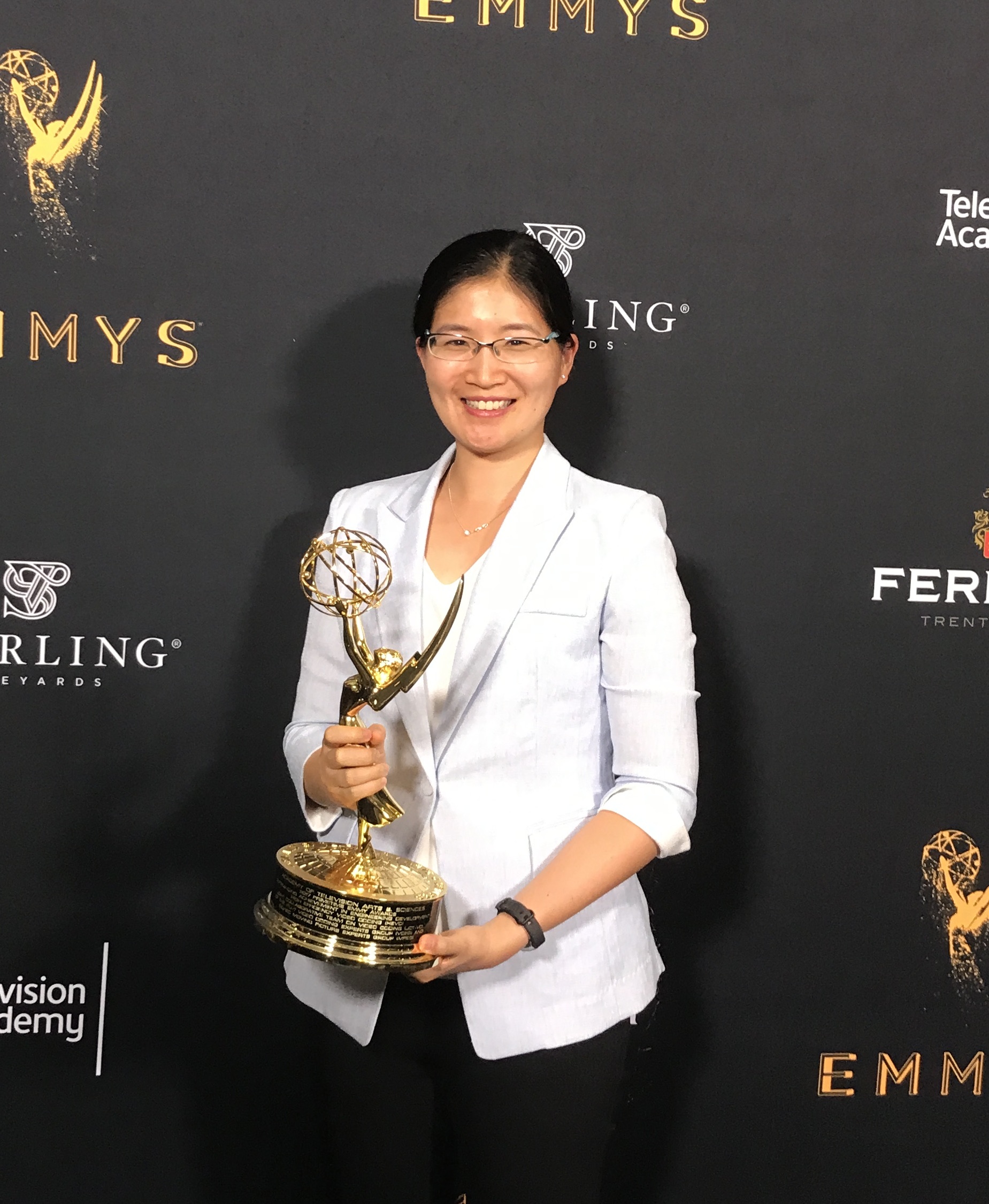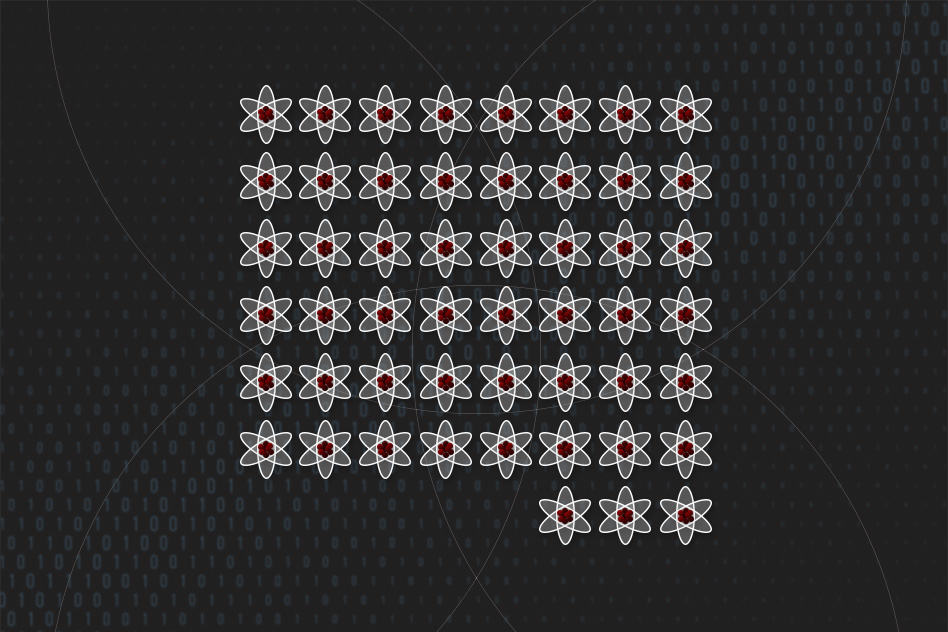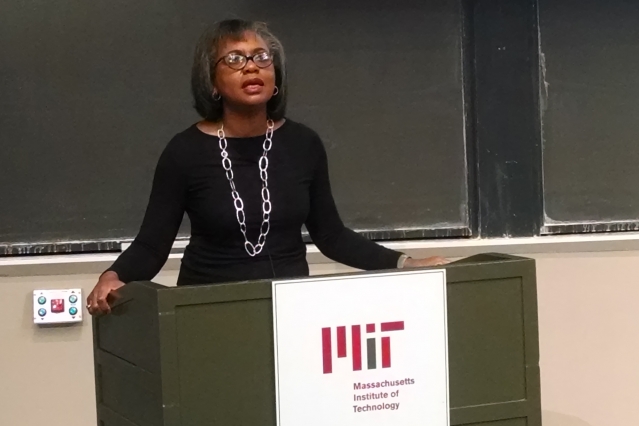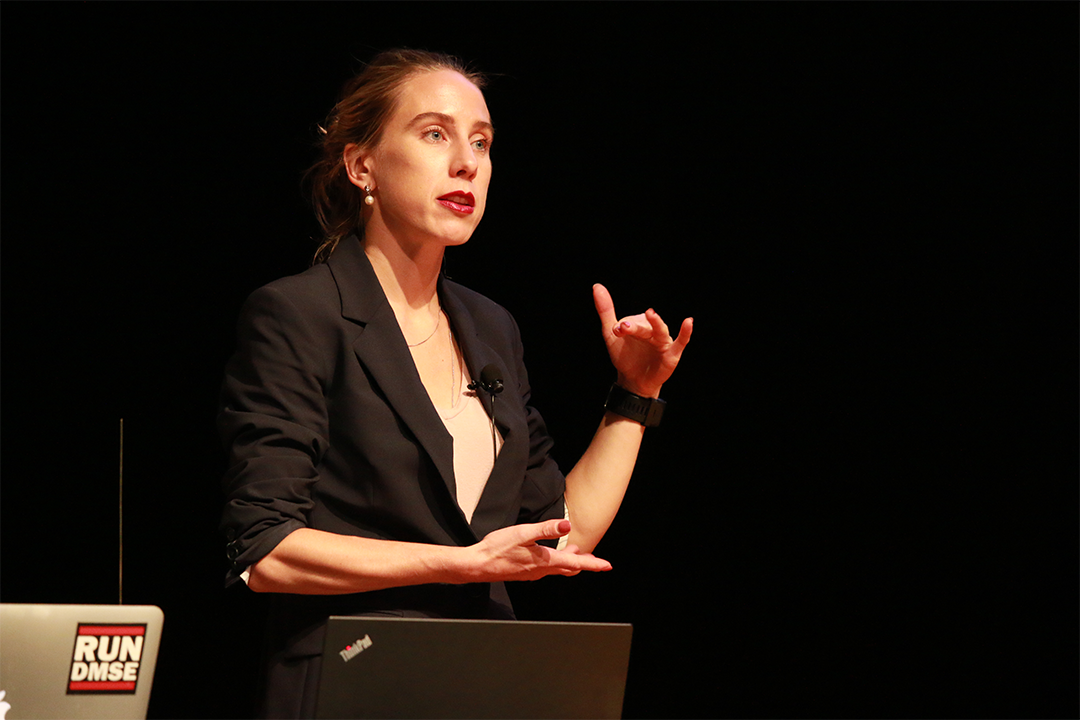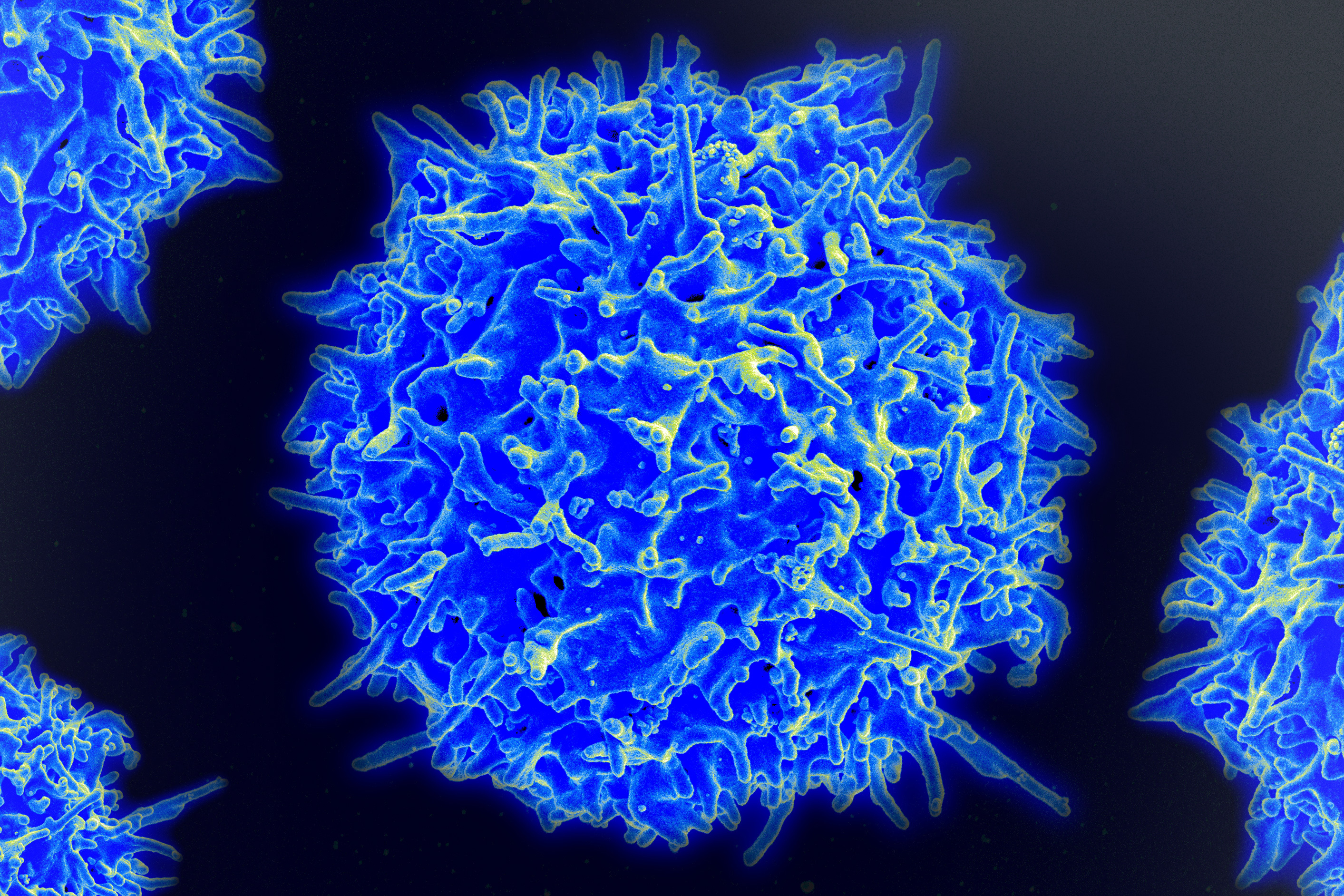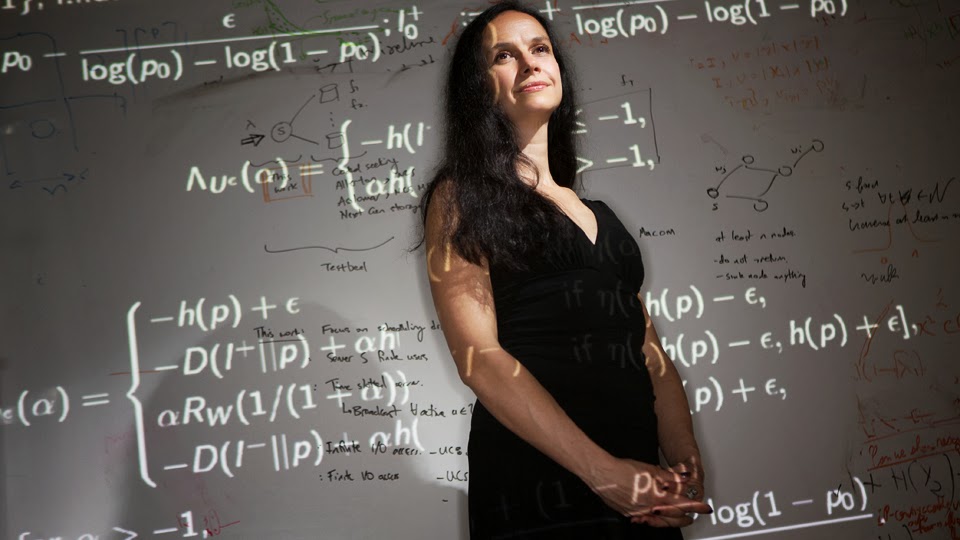RLE News
Graduate student perspective on Covid 19: Emily Toomey of the Quantum Nanostructures and Nanofabrication Group
Emily Toomey is a member of the Quantum Nanostructures and Nanofabrication Group led by Professor Karl Berggren. Recently she worked on a joint RLE/MTL effort to collect and donate PPE to support medical professionals in Massachusetts. We checked in with her for a…
Novel method for easier scaling of quantum devices
System “recruits” defects that usually cause disruptions, using them to instead carry out quantum operations. «more» Related Links: Novel method for easier scaling of quantum devices (MIT News) Professor Poala Cappellaro Quantum Engineering Group…
Cryptographic “tag of everything” could protect the supply chain
Tiny, battery-free ID chip can authenticate nearly any product to help combat losses to counterfeiting. «more» Related Links: Cryptographic “tag of everything” could protect the supply chain Digital Integrated Circuits and Systems Group Prof. Anantha…
Correcting the “jitters” in quantum devices
A new study suggests a path to more efficient error correction, which may help make quantum computers and sensors more practical. «more» Related Links: Correcting the “jitters” in quantum devices (MIT News) Professor Paola Cappellaro Quantum Engineering…
Engineers mix and match materials to make new stretchy electronics
Next-generation devices made with new “peel and stack” method may include electronic chips worn on the skin. «more» Related Links: Engineers mix and match materials to make new stretchy electronics (MIT News) Professor Jeehwan Kim Jeehwan Kim Research…
Professor Emeritus Robert Gallager named Japan Prize winner
Swedish and American researchers named Japan Prize winners «more» Related Links: Professor Emeritus Robert Gallager Communications and Network Group
Technique reveals whether models of patient risk are accurate
Computer scientists’ new method could help doctors avoid ineffective or unnecessarily risky treatments «more» Related Links: Technique reveals whether models of patient risk are accurate (MIT News) Professor Collin Stultz Computational Cardiovascular…
How to verify that quantum chips are computing correctly
A new method determines whether circuits are accurately executing complex operations that classical computers can’t tackle. «more» Related Links: How to verify that quantum chips are computing correctly (MIT News) Quantum Photonics Laboratory Professor…
Solving complex problems at the speed of light
MASSACHUSETTS INSTITUTE OF TECHNOLOGY, INSTITUTE FOR SOLDIER NANOTECHNOLOGIES Artistic illustration of solving complex problems with a photonic circuit. The background pattern shows a network of interferometers able to perform arbitrary unitary matrix multiplication.…
Megan Yamoah, Billy Woltz, and Francisca Vasconcelos of the Engineering Quantum Systems Group awarded Rhodes Scholarships
Megan Yamoah, Billy Woltz, and Francisca Vasconcelos of the Engineering Quantum Systems Group awarded Rhodes Scholarships «more» Related Links: Ali Daher, Claire Halloran, Francisca Vasconcelos, Billy Andersen Woltz, and Megan Yamoah will begin…
A new way to corrosion-proof thin atomic sheets
Ultrathin coating could protect 2D materials from corrosion, enabling their use in optics and electronics «more» Related Links: A new way to corrosion-proof thin atomic sheets (MIT News) Professor Jing Kong Nano-Materials and Electronics Group…
Engineered viruses could fight drug resistance
By tweaking bacteriophage genomes, MIT team creates a new weapon to combat infection «more» Related Links: Engineered viruses could fight drug resistance (MIT News) Professor Timothy Lu Synthetic Biology Group
Quantum sensing on a chip
Researchers integrate diamond-based sensing components onto a chip to enable low-cost, high-performance quantum hardware «more» Related Links: Quantum sensing on a chip (MIT News) Professor Dirk Englund Quantum Photonics Laboratory
Study: Even short-lived solar panels can be economically viable
Research shows that, contrary to accepted rule of thumb, a 10- or 15-year lifetime can be good enough. «more» Related Links: Study: Even short-lived solar panels can be economically viable (MIT News) Professor Vladimir Bulovic …
Collaboration adds an extra dimension to undergraduate research
Students on UROP teams agree that teamwork speeds up the research. «more» Related Links: Collaboration adds an extra dimension to undergraduate research (MIT News) MIT Energy Initiative
Anny Xijia Zheng and Ganesh Ajjaganadde named recipients of the 2019–2020 Claude E. Shannon Research Assistantship
The Research Laboratory of Electronics (RLE) is pleased to announce that the 2019–2020 Claude E. Shannon Research Assistantship has been awarded to Anny Xijia Zheng and Ganesh Ajjaganadde, doctoral students in the Department of Electrical Engineering and Computer…
Uncovering the hidden “noise” that can kill qubits
New detection tool could be used to make quantum computers robust against unwanted environmental disturbances. «more» Related Links: Uncovering the hidden “noise” that can kill qubits (MIT News) Professor Will Oliver Engineering Quantum Systems Group MIT…
Engineers develop multimaterial fiber “ink” for 3‑D‑printed devices
Filaments with embedded circuitry can be used to print complex shapes for biomedical and robotic devices. «more» Related Links: Engineers develop multimaterial fiber “ink” for 3‑D-printed devices (MIT News) Professor Yoel Fink Advanced Functional Fabrics…
MIT engineers build advanced microprocessor out of carbon nanotubes
New approach harnesses the same fabrication processes used for silicon chips, offers key advance toward next-generation computers. «more» Related Links: MIT engineers build advanced microprocessor out of carbon nanotubes (MIT News) Novels Research Group…
A much less invasive way to monitor pressure in the brain
New technique could help doctors determine whether patients are at risk from elevated pressure. «more» Related Links: A much less invasive way to monitor pressure in the brain (MIT News) Integrative Neuromonitoring and Critical Care Informatics Group…
High-precision technique stores cellular “memory” in DNA
Engineers program human and bacterial cells to keep a record of complex molecular events. «more» Related Links: High-precision technique stores cellular “memory” in DNA (MIT News) Synthetic Biology Group Professor Timothy Lu
A new way to deliver drugs with pinpoint targeting
Magnetic particles allow drugs to be released at precise times and in specific areas. «more» Related Links: A new way to deliver drugs with pinpoint targeting (MIT News) Bioelectronics Research Group Professor Polina Anikeeva Siyuan Rao
RLE Profile: Paul Azunre
RLE Profile: Paul Azunre Paul Azunre was a member of RLE for six years, first as a graduate student and then as a postdoc. He recently published his Ph.D and postdoc work. We discuss his research and the career trajectory that has taken him from his native Ghana to…
Microfluidics device helps diagnose sepsis in minutes
When time matters in hospitals, automated system can detect an early biomarker for the potentially life-threatening condition «more» Related Links: Microfluidics device helps diagnose sepsis in minutes (MIT News) Medical Electronics Device Realization…
MIT Startup, Dust Identity raises $10 Million in a series A funding round
MIT Startup, Dust Identity raises $10 Million in a series A funding round «more» Related Links: Dust Identity Raises $10 Million to Secure the Global Supply Chain—Using Diamonds (Fortune) Dust Identity secures $10M Series A to identify objects with…
Celebrating a curious mind: Steven Keating 1988–2019
Steven Keating SM’12, PhD ’16 inspired millions with his research-driven approach to battling cancer and his advocacy for open patient health data «more» Related Links: Celebrating a curious mind: Steven Keating 1988–2019 (MIT News) Can Selfies Save You?…
MIT and Fashion Institute of Technology join forces to create innovative textiles
Advanced functional fabrics workshop, held jointly with AFFOA and industrial partner New Balance, develops concepts for biodegradable footwear, active textiles «more» Related Links: MIT and Fashion Institute of Technology join forces to create innovative…
MIT Develops Powerful Artificial Muscles
Creating artificial muscles for robots, prosthetic limbs or for biomedical applications in general is something scientists have been working on for years. «more» Related Links: MIT Develops Powerful Artificial Muscles (TechLead) Bioelectronics Research…
Mr. Stefan Raufer Named Recipient of the 2019 Helen Carr Peake and William T. Peake Research Prize
Stefan Raufer, a Harvard University graduate student in the Speech and Hearing Bioscience and Technology program at the Massachusetts Eye and Ear Laboratory, supervised by Heidi Nakajima, is the 2019 Helen Carr Peake and William T. Peake award winner. His research…
Professor Yang Shao-Horn and RLE Director, Professor Marc Baldo receive MIT Energy Initiative Seed Fund grants
Annual MITEI awards support research on methane conversion, efficient energy provision, plastics recycling, and more «more» Related Links: MIT Energy Initiative awards seven Seed Fund grants for early-stage energy research (MIT News) Professor Yang…
Synthetic Biology Group member, Cesar de la Fuente named to MIT Technology Review’s Innovators under 35
Digitizing evolution to make better antibiotics «more» Related Links: 35 Innovators Under 35, Pioneers: In breaking with the old ways, they create better AI, antibiotics, and even architecture (MIT Technology Review) Un científico gallego, elegido por el…
US may out-manoeuver China in 5G with AI and blockchain technology
An FCC commissioner is hopeful that crypto-ledgers and machine learning will enable billions of devices to use wireless spectrum. «more» Related Links: US may out-manoeuver China in 5G with AI and blockchain technology (Blasting News) Professor Muriel…
The kilo is dead. Long live the kilo!
An old artifact kept in a vault outside Paris is no longer the standard for the kilogram. Now, nature itself provides the definition. «more» Related Links: The kilo is dead. Long live the kilo! (MIT News) Professor Wolfgang Ketterle
Megan Yamoah of the Engineering Quantum Systems Group named 2019–20 Goldwater Scholar for undergraduate academic achievements
Three MIT undergraduates honored for their academic achievements. «more» Related Links: Ashwin Sah, Megan Yamoah, and Steven Truong named 2019–20 Goldwater Scholars (MIT News) Engineering Quantum Systems Group MIT Center for Quantum Engineering
Generating high-quality single photons for quantum computing
New dual-cavity design emits more single photons that can carry quantum information at room temperature. «more» Related Links: Generating high-quality single photons for quantum computing (MIT News) Professor Dirk Englund Quantum Photonics Laboratory MIT…
Can science writing be automated?
A neural network can read scientific papers and render a plain-English summary «more» Related Links: Can science writing be automated? (MIT News) Professor Marin Soljacic Photonics and Modern Electro-Magnetics Group
Energy monitor can find electrical failures before they happen
Sensor can monitor wiring in a building or ship, and signal when repairs are needed «more» Related Links: Energy monitor can find electrical failures before they happen (MIT News) Professor Steven B. Leeb Electromechanical Systems Group…
New approach could boost energy capacity of lithium batteries
“Hybrid” cathodes could provide more power for a given weight and volume «more» Related Links: New approach could boost energy capacity of lithium batteries (MIT News) Professor Jing Kong Nanomaterials and Electronics Group
Arman Rezaee receives 2019 Collier Medal
Honors recognize extraordinary dedication to MIT’s goals, values, mission, and community «more» Related Links: Exceptional individuals receive 2019 MIT Excellence Awards and Collier Medal (MIT News) MIT EECS News Article
Quantum sensing method measures minuscule magnetic fields
MIT researchers find a new way to make nanoscale measurements of fields in more than one dimension. «more» Related Links: Quantum sensing method measures minuscule magnetic fields (MIT News) Professor Paola Cappellaro Quantum Engineering Group
Smoothing out the wrinkles in graphene
Coating graphene with wax makes for a less contaminated surface during device manufacturing «more» Related Links: Smoothing out the wrinkles in graphene (MIT News) Professor Jing Kong Nano-Materials and Electronics Group
Securing the “internet of things” in the quantum age
Efficient chip enables low-power devices to run today’s toughest quantum encryption schemes «more» Related Links: Securing the “internet of things” in the quantum age (MIT News) Professor Anantha Chandrakasan Digital Integrated Circuits and Systems Group…
Lighting the path
Luminaries in computing and cognition discuss their journeys and share their insights «more» Related Links: Lighting the path (MIT News) Professor Vivienne Sze Energy Efficient Multimedia Systems Group
New center boosts quantum engineering
The MIT Research Laboratory of Electronics and Lincoln Laboratory are teaming up to bridge quantum science and quantum technology for real-world applications. Author: Kylie Foy | Lincoln Laboratory From left to right, Eric Dauler, leader of Lincoln Laboratory’s…
Q&A: The talent shortage in quantum computing
William Oliver says a lack of available quantum scientists and engineers may be an inhibitor of the technology’s growth «more» Related Links: Q&A: The talent shortage in quantum computing (MIT News) Engineering Quantum Systems Group Professor William…
Mechanism helps explain the ear’s exquisite sensitivity
A critical gel-like structure in the inner ear moves according to a sound’s frequency, researchers find «more» Related Links: Mechanism helps explain the ear’s exquisite sensitivity (MIT News) Professor Dennis Freeman
Physicists record “lifetime” of graphene qubits
First measurement of its kind could provide stepping stone to practical quantum computing «more» Related Links: Physicists record “lifetime” of graphene qubits (MIT News) Engineering Quantum Systems Group Professor William D. Oliver…
Opportunities for materials innovation abound
Faculty researchers share insights into new capabilities at the annual Industrial Liaison Program Research and Development Conference «more» Related Links: Opportunities for materials innovation abound (MIT News) Fibers@MIT Research Group Professor Yoel…
Thomas Heldt named IEEE EMBS 2019 Distinguished Lecturer
The Institute of Electrical and Electronics Engineers (IEEE) has named IMES core faculty member and W.M. Keck Career Development Professor in Biomedical Engineering, Thomas Heldt, an Engineering in Medicine and Biology Society (EMBS) Distinguished Lecturer for 2019.…
Smart fabrics not yet a perfect fit
Yoel Fink wants a fund that would invest in startups working on products that use next-generation textiles «more» Related Links: Smart fabrics not yet a perfect fit (Boston Globe) Advanced Functional Fabrics of America Professor Yoel Fink Fibers@MIT…
Three at MIT named 2018 fellows of the National Academy of Inventors
MIT president and two engineering faculty recognized for contributions with tangible impacts on quality of life, economic development, and the welfare of society «more» Related Links: Three at MIT named 2018 fellows of the National Academy of Inventors…
Saving heat until you need it
A new concept for thermal energy storage involves a material that absorbs heat as it melts and releases it as it resolidifies — but only when triggered by light «more» Related Links: Saving heat until you need it (MIT News) Grossman Group Professor…
Atoms stand in for electrons in system for probing high-temperature superconductors
Using new “quantum emulator,” physicists can observe individual atoms moving through these materials, and measure their speed «more» Related Links: Atoms stand in for electrons in system for probing high-temperature superconductors (MIT News) Ultracold…
MIT engineers repurpose wasp venom as an antibiotic drug
Altered peptides from a South American wasp’s venom can kill bacteria but are nontoxic to human cells «more» Related Links: MIT engineers repurpose wasp venom as an antibiotic drug (MIT News) Synthetic Biology Group Professor Timothy Lu
Professor William D. Oliver committee member for “Quantum Computing: Progress and Prospects,” A Consensus Study Report by The National Academies of Science, Engineering, and Medicine
Professor William D. Oliver committee member for “Quantum Computing: Progress and Prospects,” A Consensus Study Report by The National Academies of Science, Engineering, and Medicine Quantum mechanics, the subfield of physics that describes the behavior of very small…
A new way to provide cooling without power
Device developed at MIT could provide refrigeration for off-grid locations «more» Related Links: A new way to provide cooling without power (MIT News) Photonics and Modern Electro-Magnetics Group Professor Marin Soljacic
Jack Turner Entrepreneurship Award established to support electronics research
Generous $1 million gift recognizes the collaborations of the Research Laboratory of Electronics and the Technology Licensing Office to develop MIT intellectual property «more» Related Links: Jack Turner Entrepreneurship Award established to support…
MIT engineers fly first-ever plane with no moving parts
The silent, lightweight aircraft doesn’t depend on fossil fuels «more» Related Links: MIT engineers fly first-ever plane with no moving parts (MIT News) Power Electronics Research Group Professor David Perreault
Boston-based startup gets $2.3M to identify physical objects using diamond dust
The science behind Dust Identity was nurtured inside MIT, but the company has been at work for two years trying to build a solution based on that idea after receiving early support from DARPA «more» Related Links: This startup got $2.3M to identify…
The Jack Turner Entrepreneurship Award
The Research Laboratory of Electronics (RLE) in collaboration with the Deshpande Center for Technological Innovation is pleased to announce the Jack TurnerEntrepreneurship Award. The award will complement grants from the Deshpande Center and provide support to…
Extending the life of low-cost, compact, lightweight batteries
New design could greatly extend the shelf life of single-use metal-air batteries for electric vehicles, off-grid storage, and other applications «more» Related Links: Extending the life of low-cost, compact, lightweight batteries (MIT News)…
Machine-learning system could aid critical decisions in sepsis care
Model predicts whether ER patients suffering from sepsis urgently need a change in therapy «more» Related Links: Machine-learning system could aid critical decisions in sepsis care (MIT News) The Integrative Neuromonitoring and Critical Care Informatics…
Professor Polina Anikeeva featured in Popular Mechanics, “The Heroes of Science who are Unlocking the Brain”
True stories of indefatigable researchers, heroic engineers, and champions of, neuroscience who are finally turning the corner in the effort to understand, heal, and improve the human brain. «more» Related Links: The Heroes of Science who are Unlocking…
Researchers quickly harvest 2‑D materials, bringing them closer to commercialization
Efficient method for making single-atom-thick, wafer-scale materials opens up opportunities in flexible electronics. «more» Related Links: Researchers quickly harvest 2‑D materials, bringing them closer to commercialization (MIT News) Professor Jeehwan…
DOE Program Award: Understanding and Controlling Entangled and Correlated Quantum States in Confined Solid-state Systems Created via Atomic Scale Manipulation
Joint MIT, Harvard, and Oak Ridge National Laboratory grant in Quantum Information Science awarded by the Department of Energy. “Understanding and Controlling Entangled and Correlated Quantum States in Confined Solid-state Systems Created via Atomic Scale Manipulation”
Biological engineers discover new antibiotic candidates
Screen of human proteins reveals some with antimicrobial power. «more» Related Links: Biological engineers discover new antibiotic candidates (MIT News) Professor Timothy Lu Synthetic Biology Group
More efficient security for cloud-based machine learning
Novel combination of two encryption techniques protects private data, while keeping neural networks running quickly. «more» Related Links: Professor Anantha Chandrakasan More efficient security for cloud-based machine learning (MIT News)
3Q: Muriel Médard on the world-altering rise of 5G
“The reason 5G is so different is that what exactly it will look like is still up in the air. Everyone agrees the phrase is a bit of a catch-all.” «more» Related Links: 3Q: Muriel Médard on the world-altering rise of 5G (MIT News) Professor Muriel Medard…
On-chip optical filter processes wide range of light wavelengths
Silicon-based system offers smaller, cheaper alternative to other “broadband” filters; could improve a variety of photonic devices. «more» Related Links: On-chip optical filter processes wide range of light wavelengths (MIT News) Professor Erich Ippen…
Mr. Wei Ouyang Named Recipient of the 2018 Helen Carr Peake and William T. Peake Research Prize
Electrical Engineering and Computer Science student, Wei Ouyang, supervised by Professor Jongyoon Han, was awarded the 2018 Peake Research Prize. Mr. Ouyang is recognized for his work on an entirely new way to detect biomolecules (DNA and proteins) and cells in a…
Integrating optical components into existing chip designs
Technique would allow addition of optical communication components to existing chips with little modification of their designs. «more» Related Links: Integrating optical components into existing chip designs (MIT News) Physical Optics and Electronics…
Artificial antimicrobial peptides could help overcome drug-resistant bacteria
With aid of computer algorithm, researchers develop peptides more powerful than those found in nature. «more» Related Links: Artificial antimicrobial peptides could help overcome drug-resistant bacteria (MIT News) Synthetic Biology Group Professor…
AFFOA and VMS launch Advanced Fabrics Entrepreneurship Program
Year-long program will give early-stage entrepreneurs a leg up in the functional fabrics industry. «more» Related Links: AFFOA fibers@MIT AFFOA and VMS launch Advanced Fabrics Entrepreneurship Program (MIT News)
Securing the internet against quantum computers
The only method of securing long-distance communication against the emerging threat of quantum computers is quantum key distribution (QKD), a cryptographic protocol that relies on aspects of quantum mechanics. Despite significant progress over the past decades, QKD…
Photonic communication comes to computer chips
Startup’s optoelectronic chips could reduce energy usage by up to 50 percent in data centers while increasing computing speeds. «more» Related Links: Photonic communication comes to computer chips (MIT News) Physical Optics and Electronics Group…
Monitor detects dangerously low white blood cell levels
Technology could help prevent life-threatening infections in patients receiving chemotherapy. «more» Related Links: Monitor detects dangerously low white blood cell levels (MIT News) Madrid M+ Vision Consortium MIT linQ
A new way to find better battery materials
Design principles could point to better electrolytes for next-generation lithium batteries. «more» Related Links: A new way to find better battery materials (MIT News) Professor Yang Shao-Horn Electrochemical Energy Lab
“Body on a chip” could improve drug evaluation
Human tissue samples linked by microfluidic channels replicate interactions of multiple organs. «more» Related Links: “Body on a chip” could improve drug evaluation (MIT News) MIT gadget puts multiple artificial organs into a paperback-sized connected…
Seeking materials that match the brain
Polina Anikeeva explores ways to make neural probes that are compatible with delicate biological tissues «more» Related Links: Seeking materials that match the brain (MIT News) Professor Polina Anikeeva Bioelectronics Group
Physicists create new form of light
Newly observed optical state could enable quantum computing with photons «more» Related Links: Physicists create new form of light (MIT News) Professor Vladan Vuletić Experimental Atomic Physics Group
Honorary doctorate awarded to Professor James Fujimoto by Friedrich-Alexander-Universität Erlangen-Nürnberg
Honorary doctorate awarded to Professor James Fujimoto, Ph.D. «more» Related Links: Professor James Fujimoto Biomedical Optical Imaging and Biophotonics Group Honorary doctorate awarded to Professor James Fujimoto by Friedrich-Alexander-Universität…
Neural networks everywhere
New chip reduces neural networks’ power consumption by up to 95 percent, making them practical for battery-powered devices. «more» Related Links: Neural networks everywhere (MIT News) Professor Anantha Chandrakasan Digital Integrated Circuits and Systems…
Energy-efficient encryption for the internet of things
Special-purpose chip reduces power consumption of public-key encryption by 99.75 percent, increases speed 500-fold. «more» Related Links: Energy-efficient encryption for the internet of things (MIT News) Professor Anantha Chandrakasan Digital Integrated…
Former RLE director, Professor Yoel Fink recognized by Science Magazine for creation of Translational Fellows Program
For postdocs looking to break into entrepreneurship, this MIT fellowship is helping light the way «more» Related Links: Professor Yoel Fink AFFOA
Polina Anikeeva awarded 2018 Vilcek Prize recognizing contributions to biomedical research made by immigrant scientists
Prize recognizes contributions to biomedical research made by immigrant scientists. «more» Related Links: Professor Polina Anikeeva Bioelectronics Laboratory Polina Anikeeva and Feng Zhang awarded 2018 Vilcek Prize (MIT News)
Engineers design artificial synapse for “brain-on-a-chip” hardware
Design is major stepping stone toward portable artificial-intelligence devices. «more» Related Links: Engineers design artificial synapse for “brain-on-a-chip” hardware (MIT News) The Nanoelectronics Research Group Professor Jeehwan Kim
Professor Joel Voldman named Associate Department Head of EECS
Three EECS professors join leadership team. «more» Related Links: Professor Joel Voldman Biological Microtechnology and BioMEMS Group
New exotic phenomena seen in photonic crystals
Researchers observe, for the first time, topological effects unique to an “open” system. «more» Related Links: Professor Marin Soljacic Photonics and Modern Electro-Magnetics Group Professor John Joannopoulos ab initio Physics Group New exotic phenomena…
Startup aims to make vision care more accessible in developing world
Portable device can generate corrective lens prescriptions in areas with no optometry care. «more» Related Links: LinQ Professor Martha Gray Startup aims to make vision care more accessible in developing world (MIT News)
Study by ARVO authors finds vision research pays for itself
Researchers have shown that optical coherence tomography (OCT) has saved Medicare $9 billion dollars «more» Related Links: Study by ARVO authors finds vision research pays for itself (ARVO) Biomedical Optical Imaging and Biophotonics Group Professor…
Croatian president Kolinda Grabar-Kitarović visited MIT, bestowing two medals upon Professor Marin Soljačić
Croatian president Kolinda Grabar-Kitarović visited MIT, bestowing two medals upon Professor Marin Soljačić «more» Related Links: State visit includes meeting with MIT president and award for MIT physicist Marin Soljačić. (MIT News) Photonics and Modern…
Engineers 3‑D print a “living tattoo”
New technique 3‑D prints programmed cells into living devices for first time. «more» Related Links: Engineers 3‑D print a “living tattoo” (MIT News) Synthetic Biology Group Professor Timothy K. Lu
Vivienne Sze shares Engineering Emmy Award with colleagues
Associate professor of electrical engineering and computer science was part of a group that earned acclaim for work on a new video compression standard. «more» Related Links: Vivienne Sze shares Engineering Emmy Award with colleagues (MIT News) The…
Scientists demonstrate one of largest quantum simulators yet, with 51 atoms
New technique manipulates atoms into antiferromagnetic state. «more» Related Links: Prof. Vladan Vuletic Harvard-MIT Center for Ultracold Atoms Scientists demonstrate one of largest quantum simulators yet, with 51 atoms (MIT News)
Visiting Professor Anita Hill leads conversations about Title IX
Attorney, author, and civil-rights advocate moderates The Gender/Race Imperative, a series of talks at MIT about equality in education. «more» Related Links: Visiting Professor Anita Hill leads conversations about Title IX (MIT News) The Gender/Race…
Interdisciplinary materials science a key to progress
Bringing together researchers from different science and engineering fields for Materials Day Symposium promises solutions to energy, health, and other needs. «more» Related Links: Interdisciplinary materials science a key to progress (MIT News)…
Gene circuit switches on inside cancer cells, triggers immune attack
Advance may open new pathways for cancer immunotherapy. «more» Related Links: Gene circuit switches on inside cancer cells, triggers immune attack (MIT News) Synthetic Biology Group Professor Timothy K. Lu
Mr. Seongjun Park and Mr. Kaicheng Liang named recipients of the 2017 Helen Carr Peake Research Prize
Mr. Park’s research focuses on optical neural tissue engineering that combines optogenetics, electronic scaffold engineering, and tissue regeneration. In his first project, he demonstrated that optical stimuli can be used to enhance nerve growth by three fold and also…
Yuezhen Niu named recipient of the 2017–2018 Claude E. Shannon Research Assistantship
The Research Laboratory of Electronics (RLE) is pleased to announce that the 2017–2018 Claude E. Shannon Research Assistantship has been awarded to Yuezhen Niu, a doctoral student in the Physics Department. Ms. Niu’s doctoral research is co-supervised by RLE PIs Isaac…
Professor Muriel Medard wins the IEEE communications Society Edwin Howard Armstrong Achievement Award
“For pioneering work in the fields of network coding, wireless communications, and optical networking.” «more» Related Links: IEEE ComSoc The Network Coding and Reliable Communications Group

